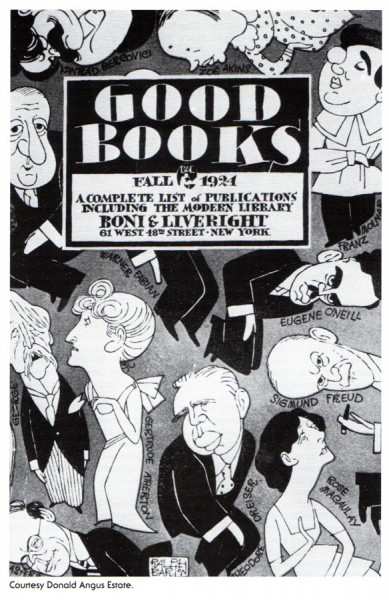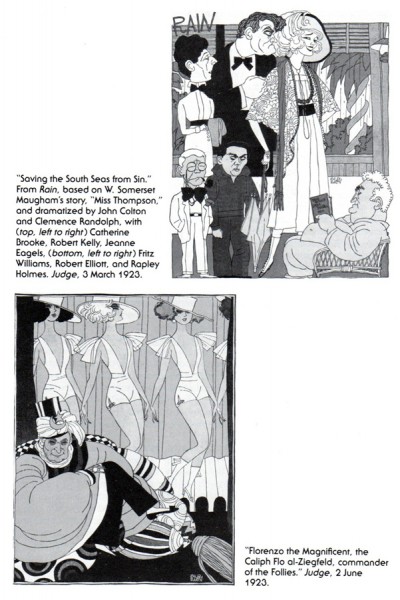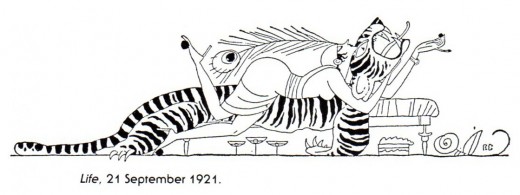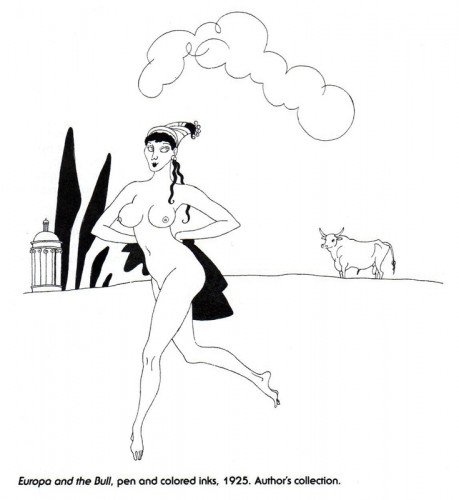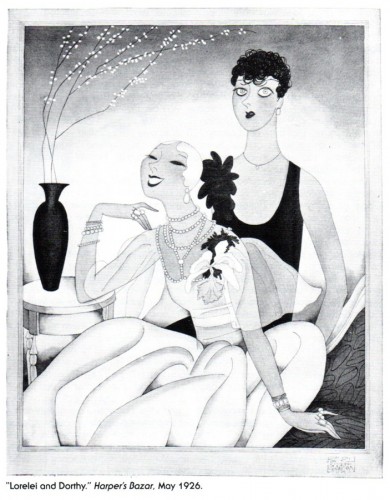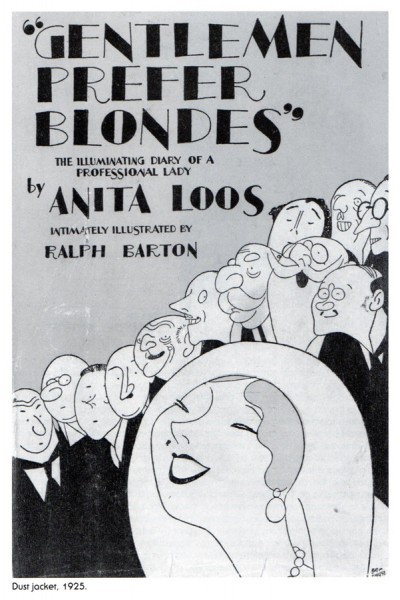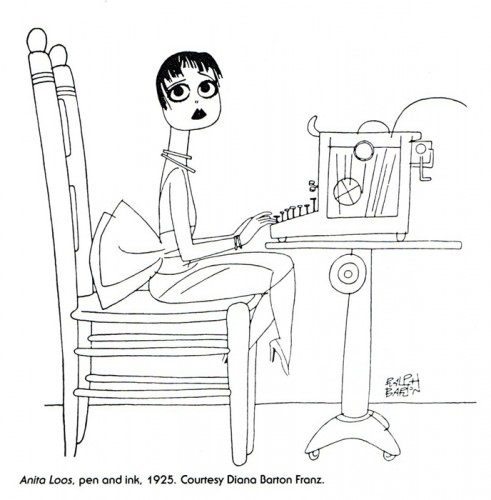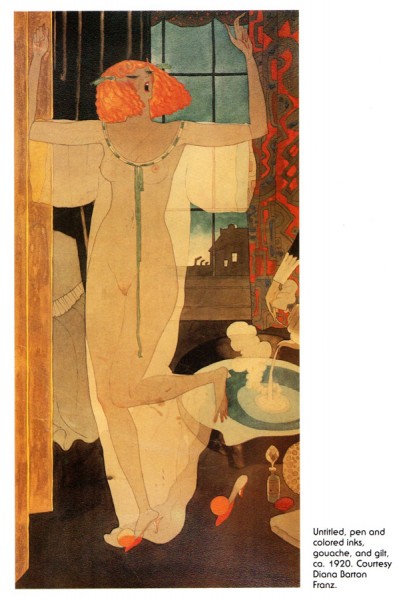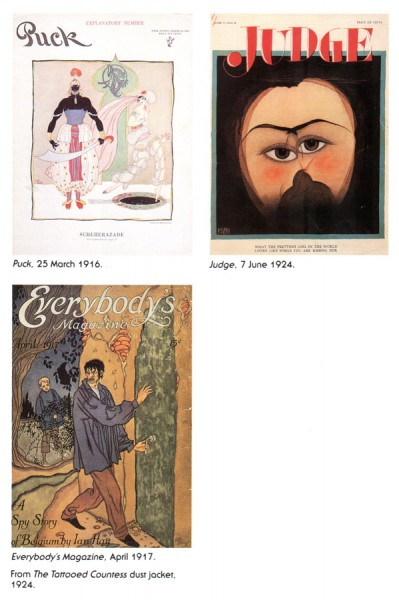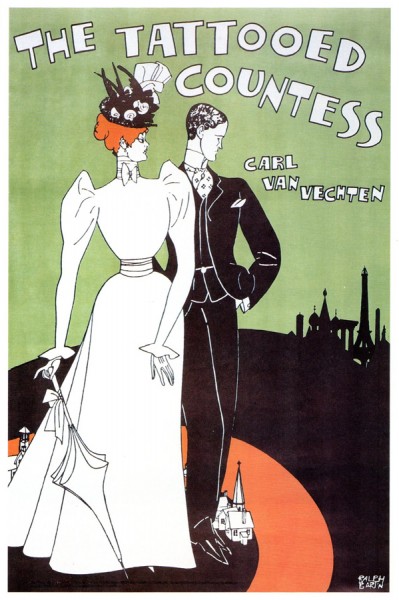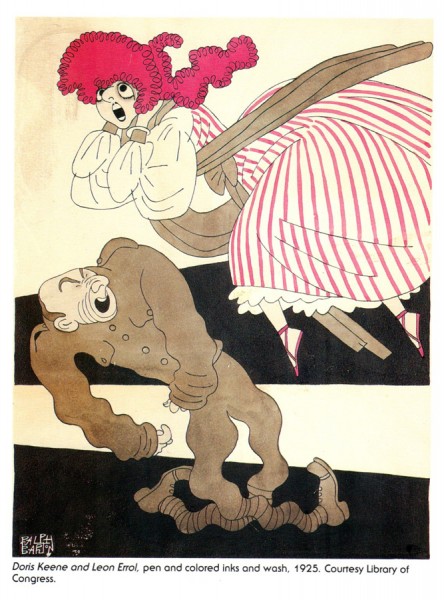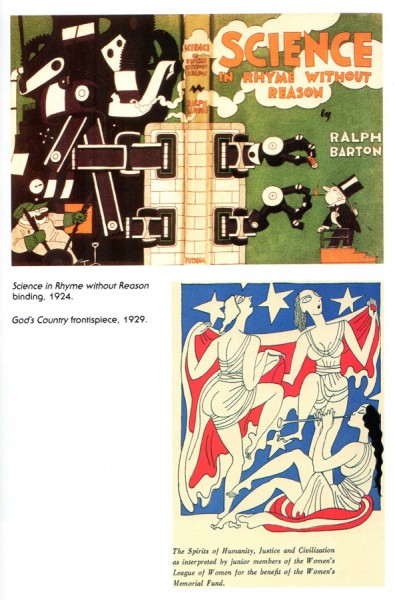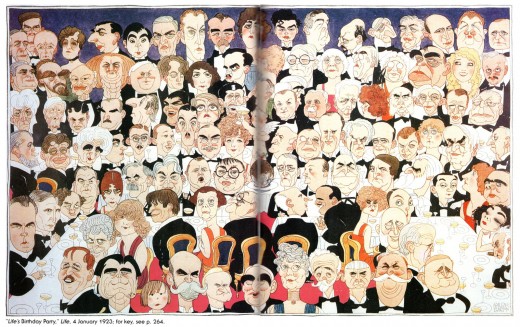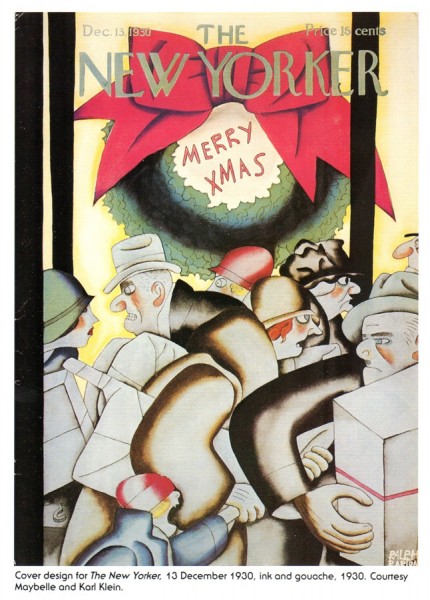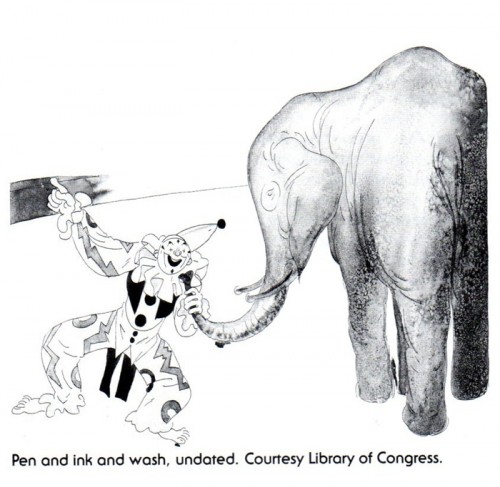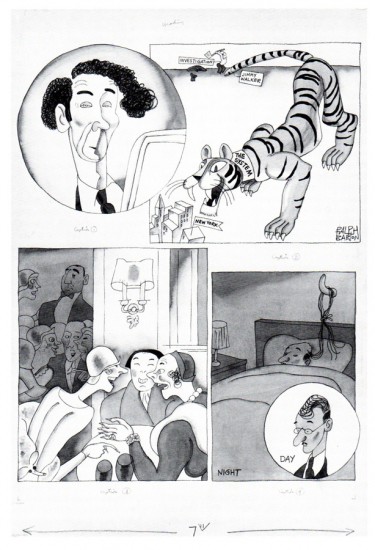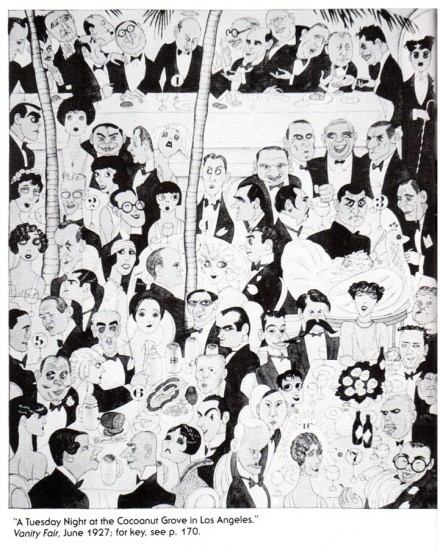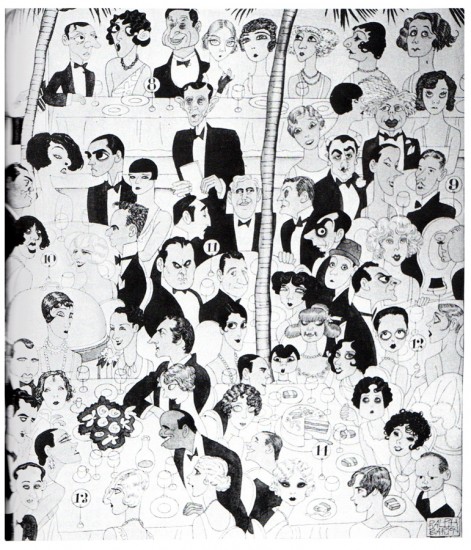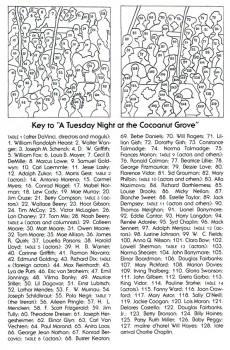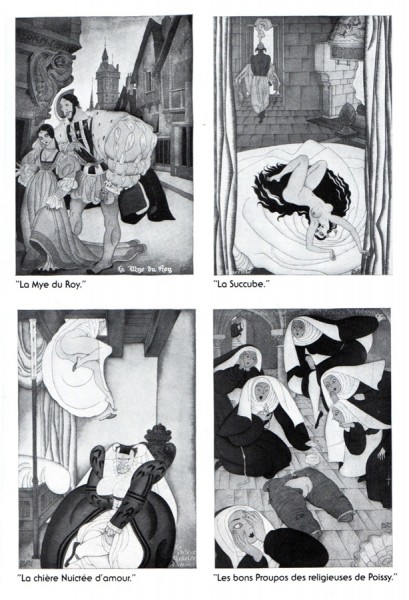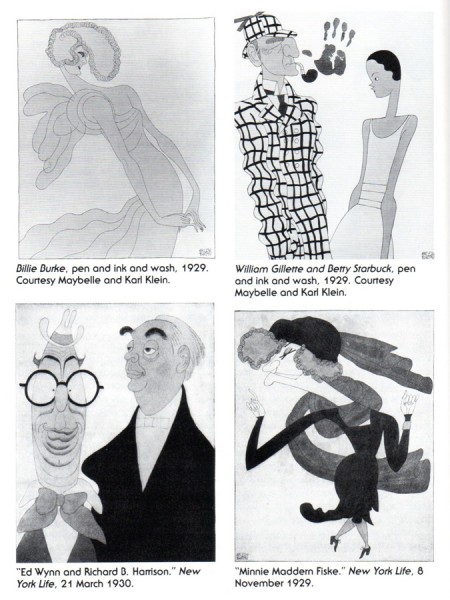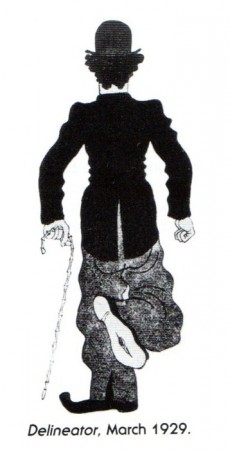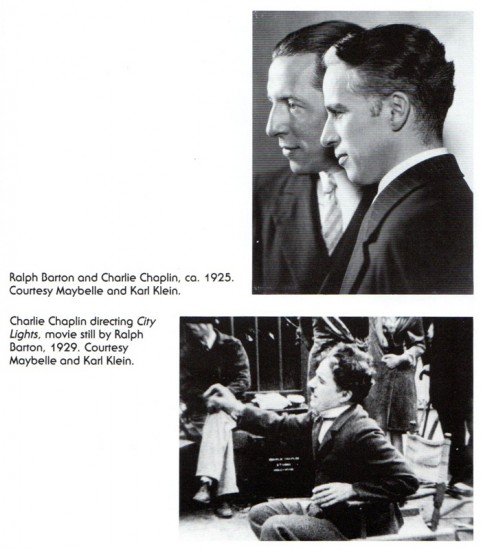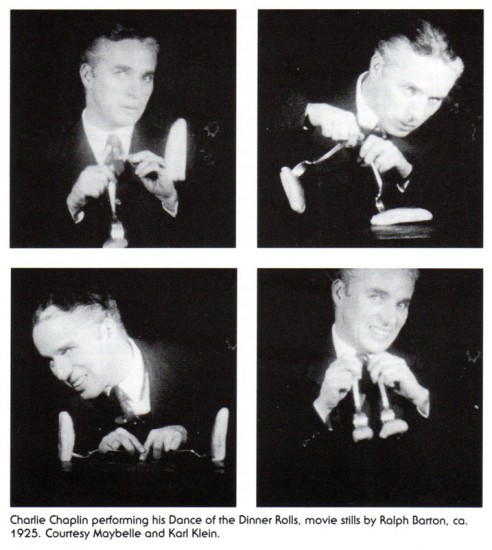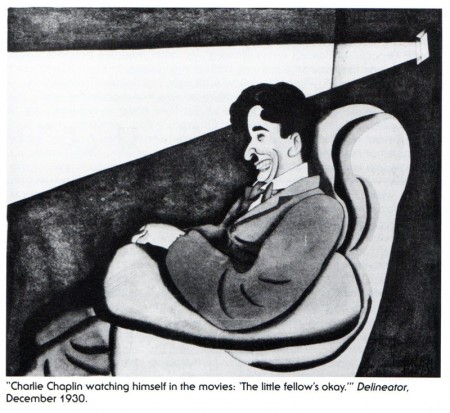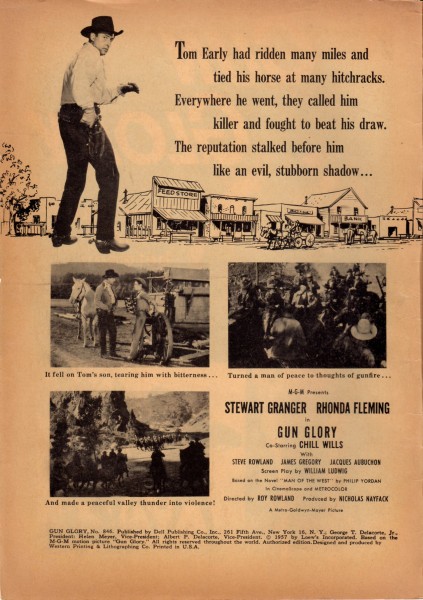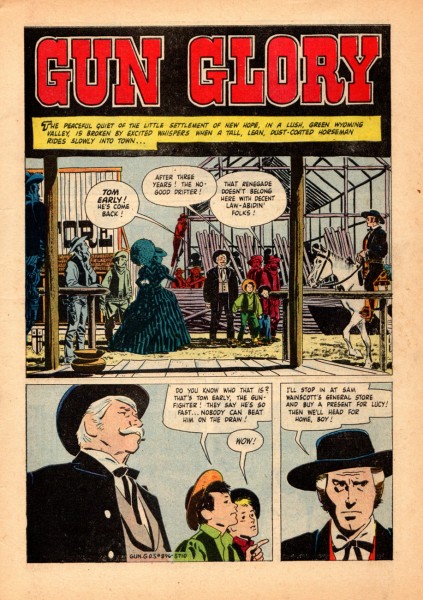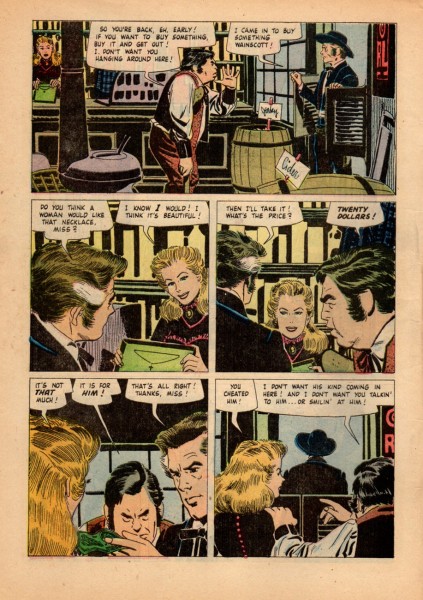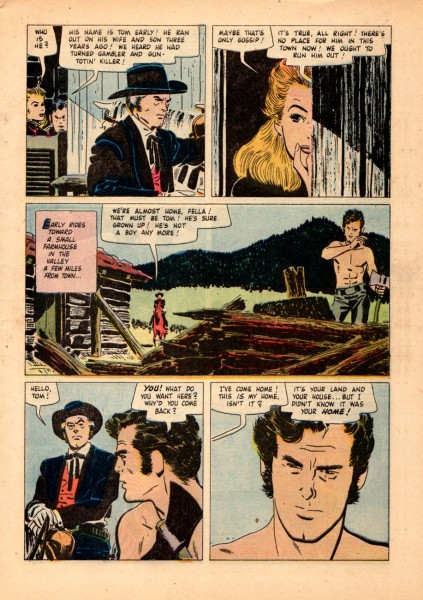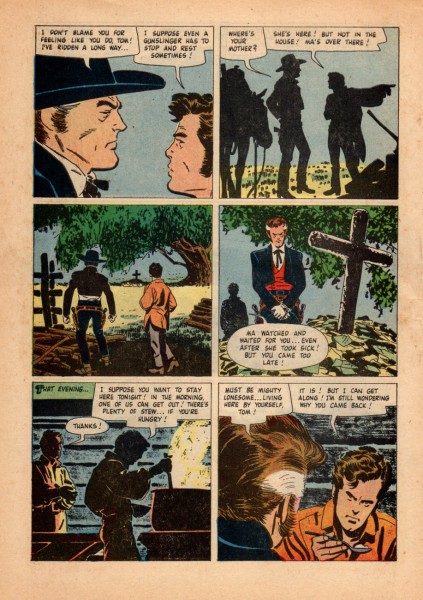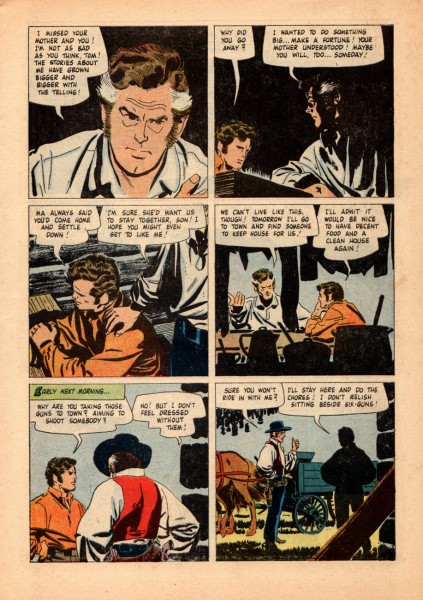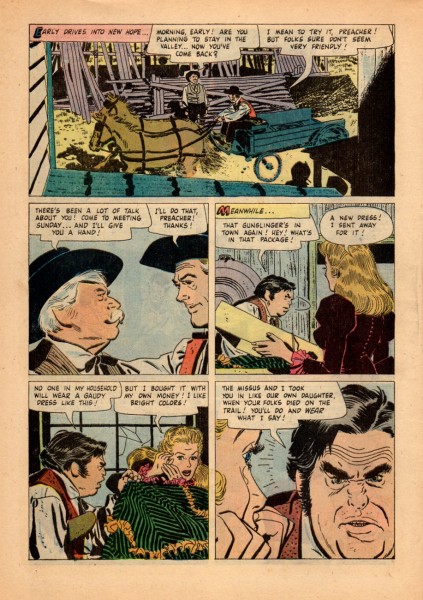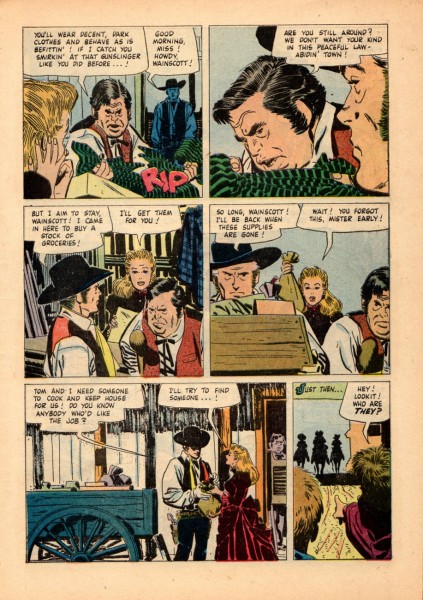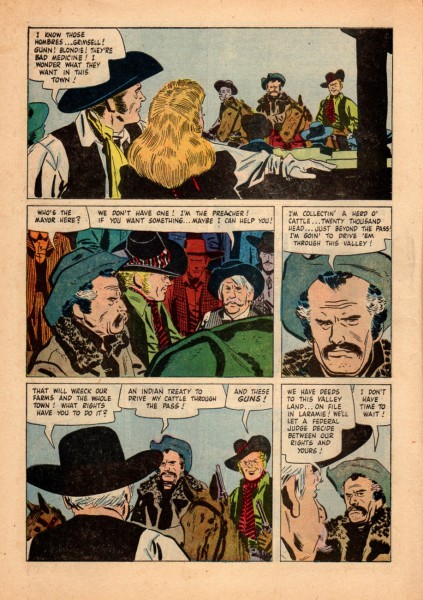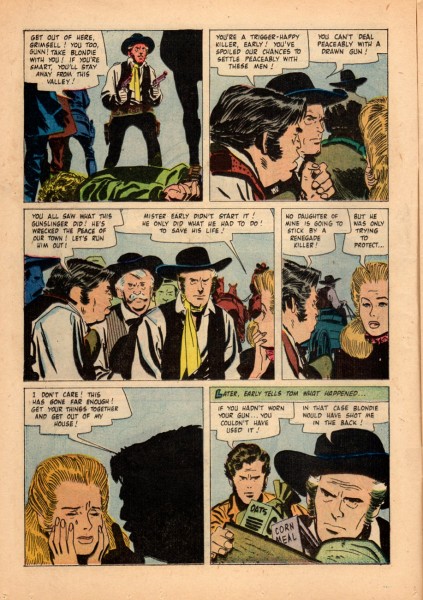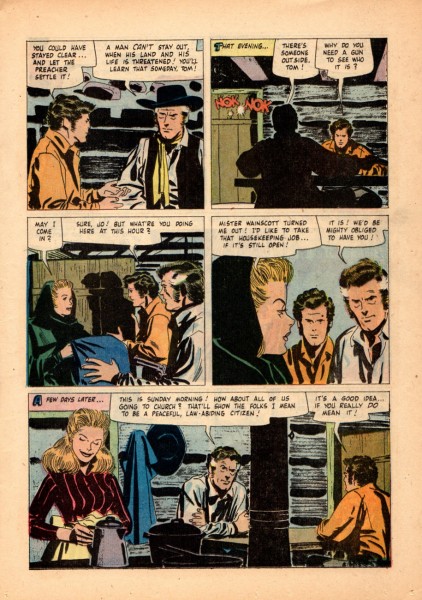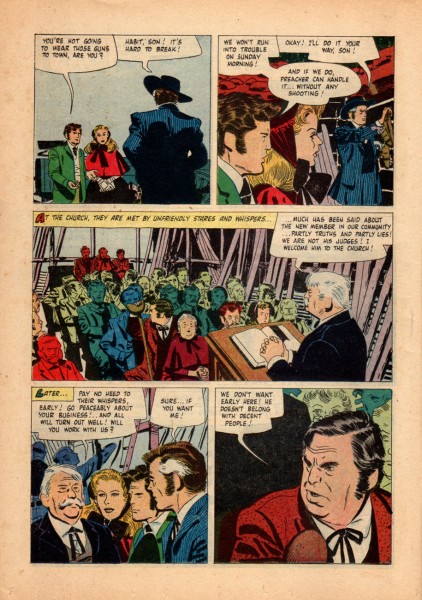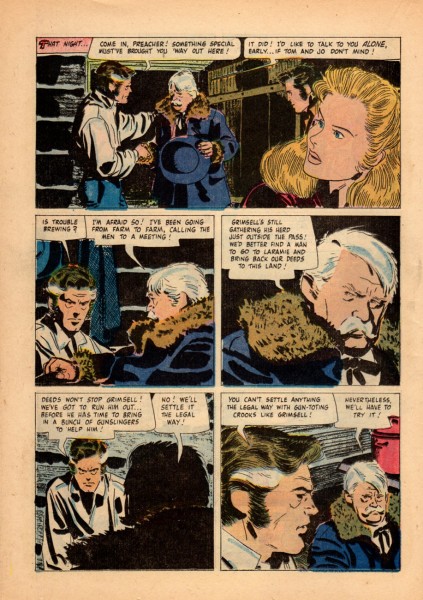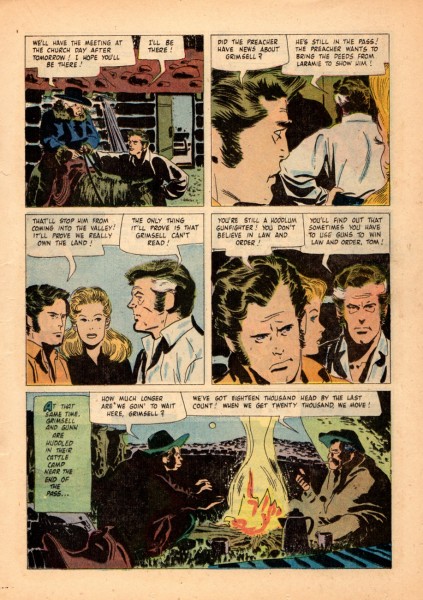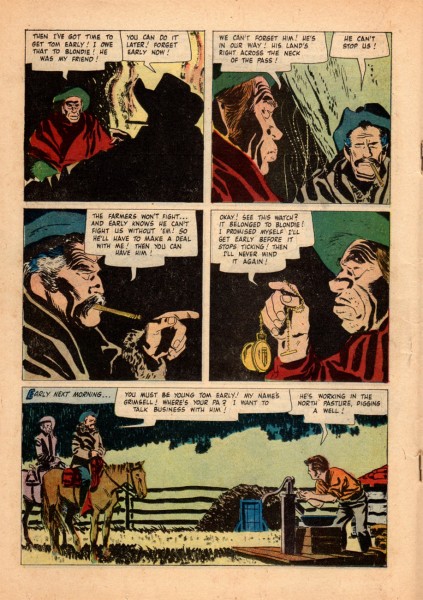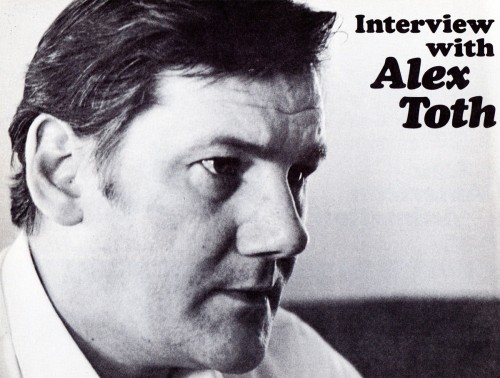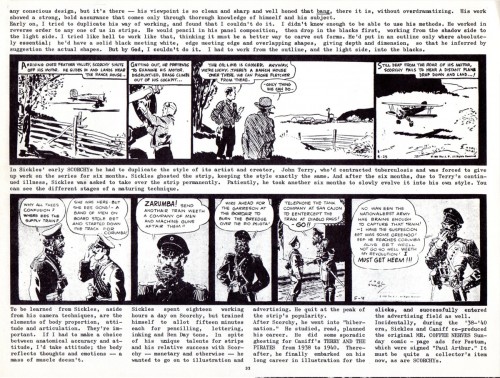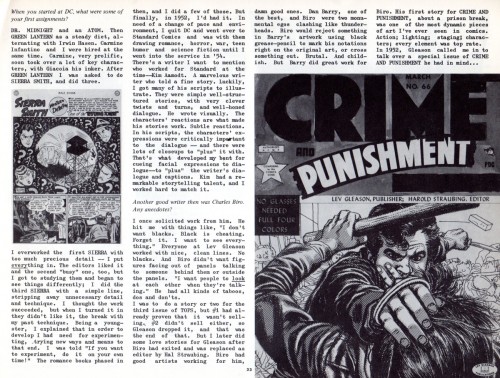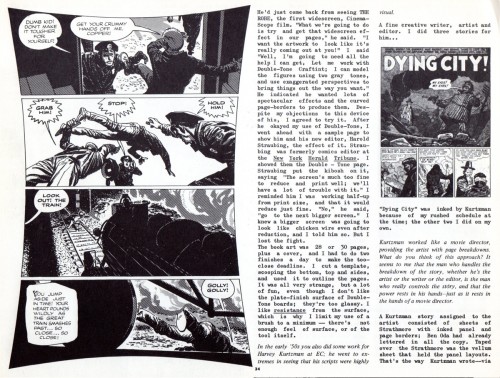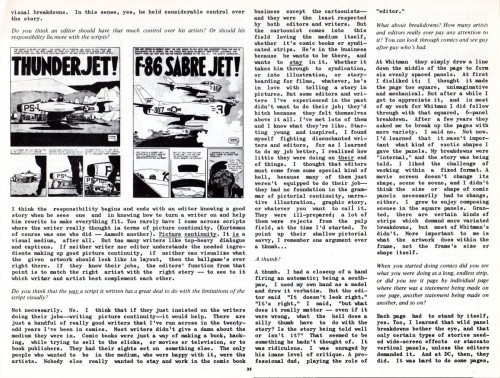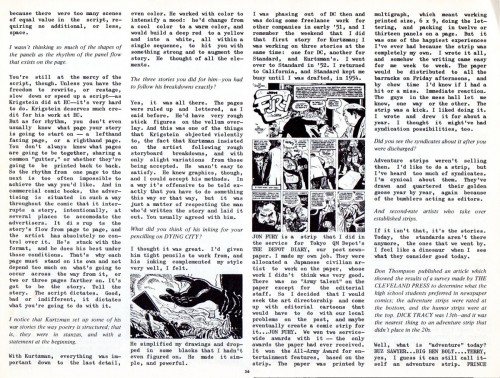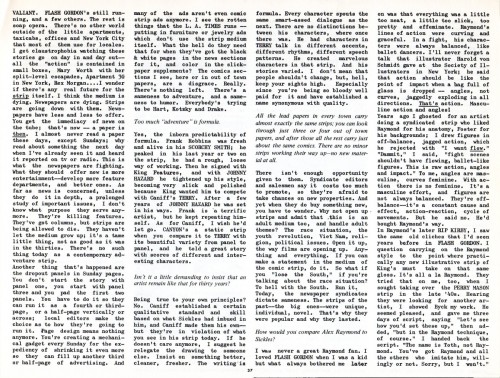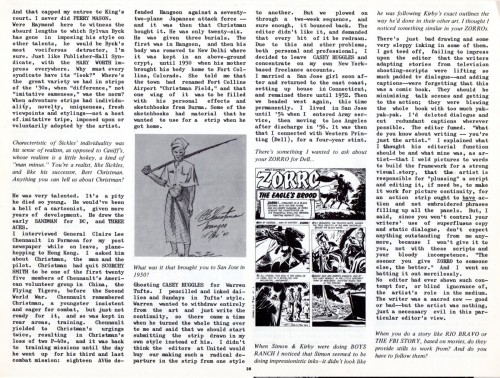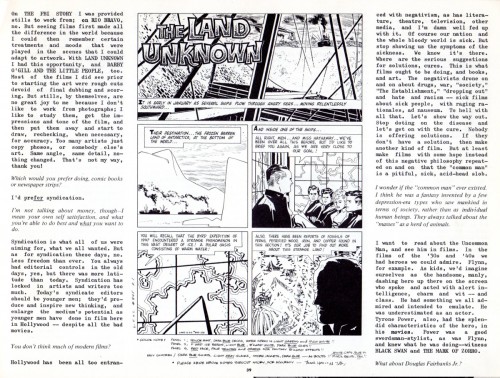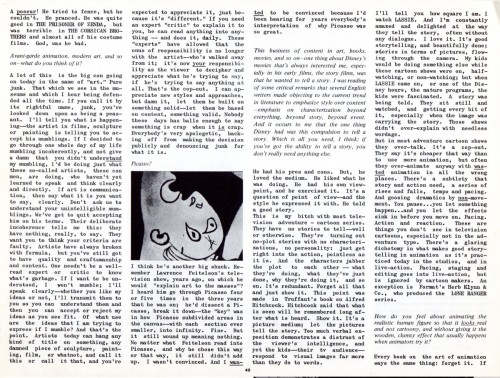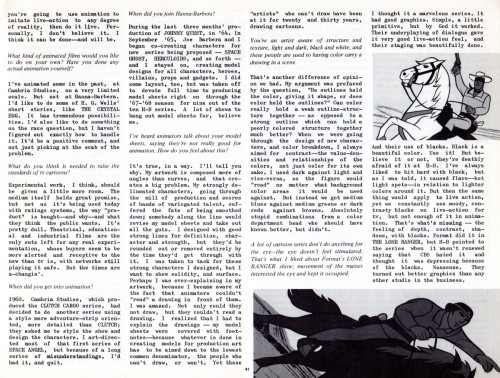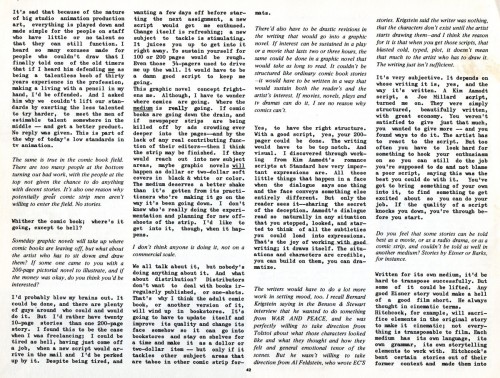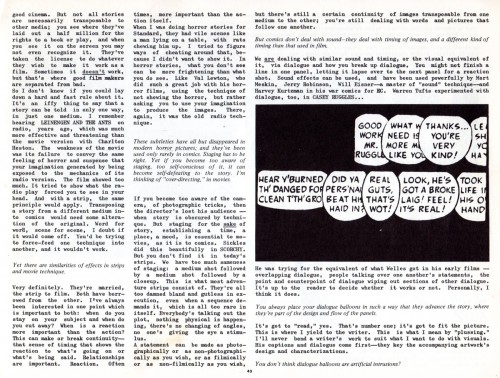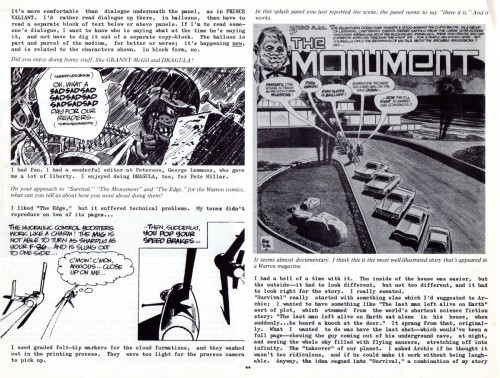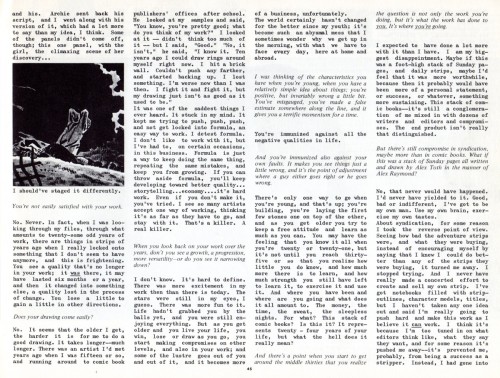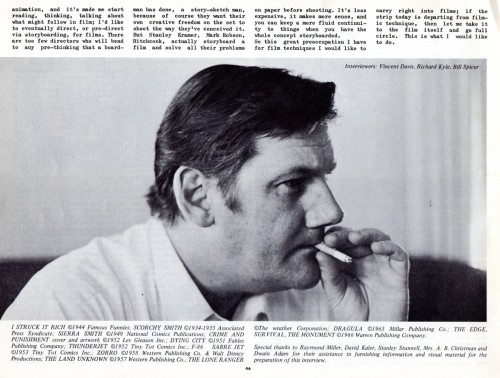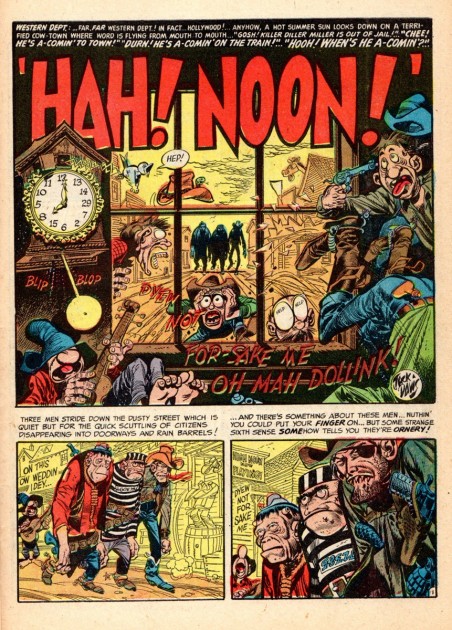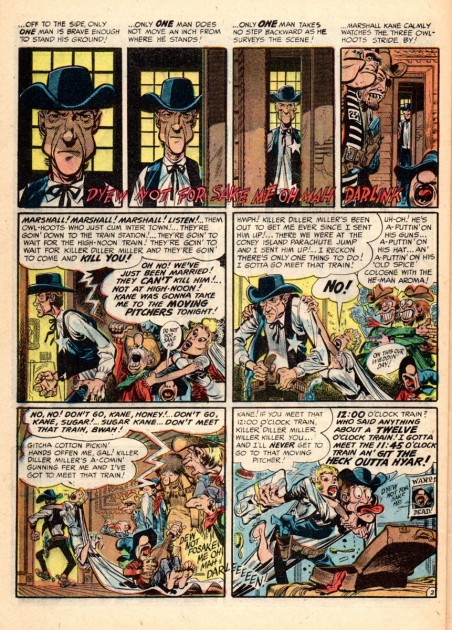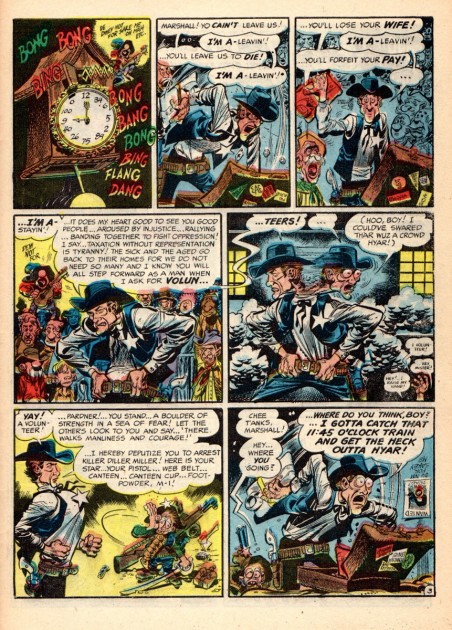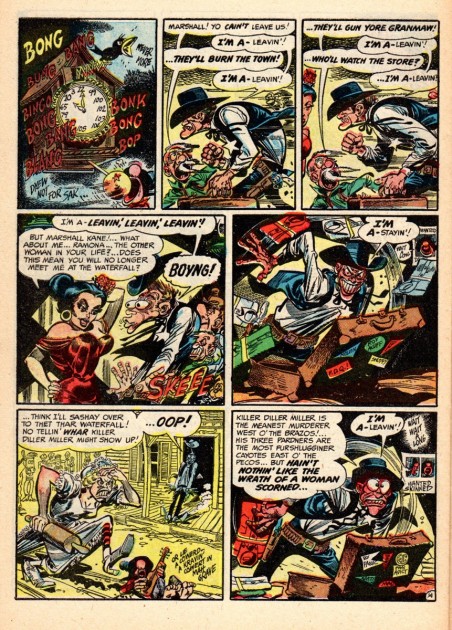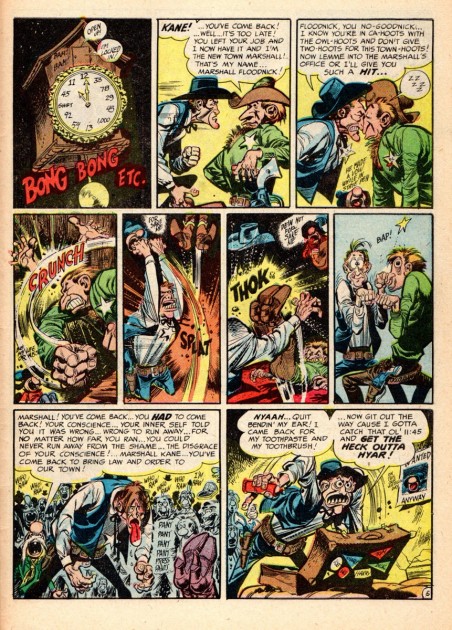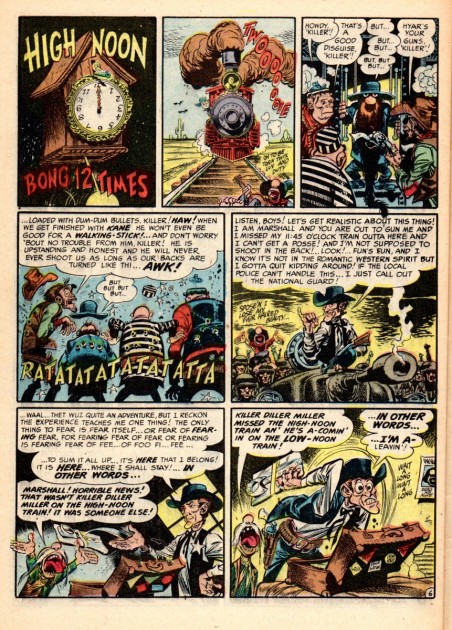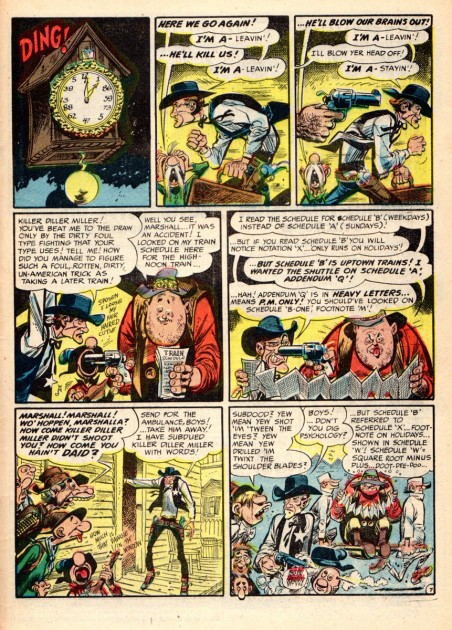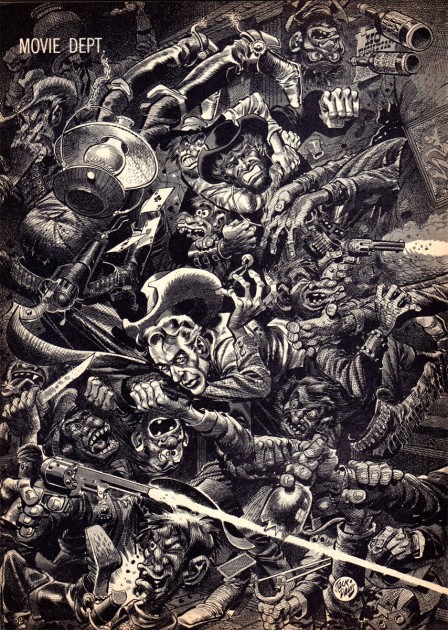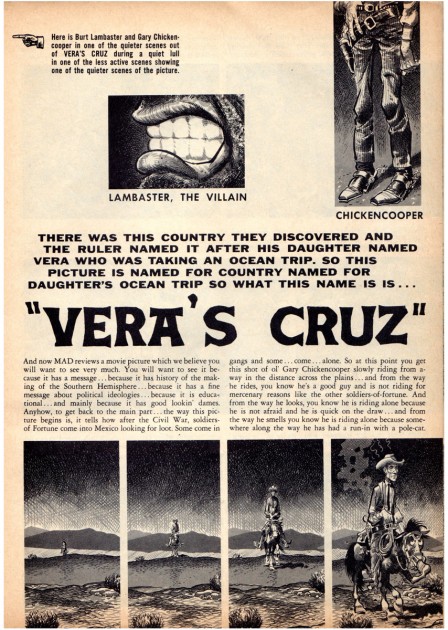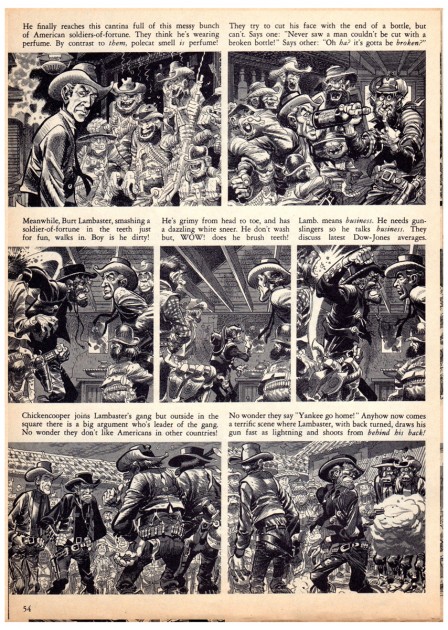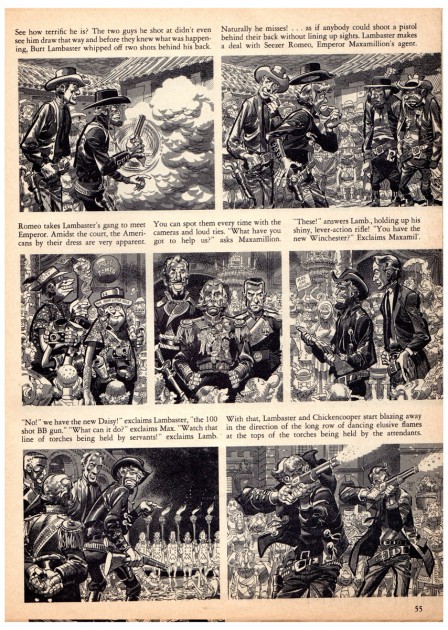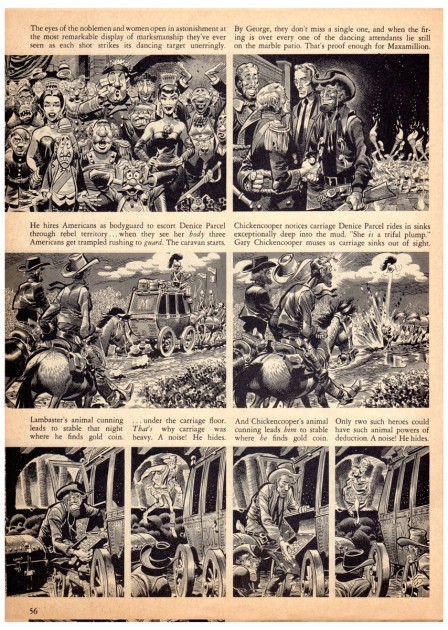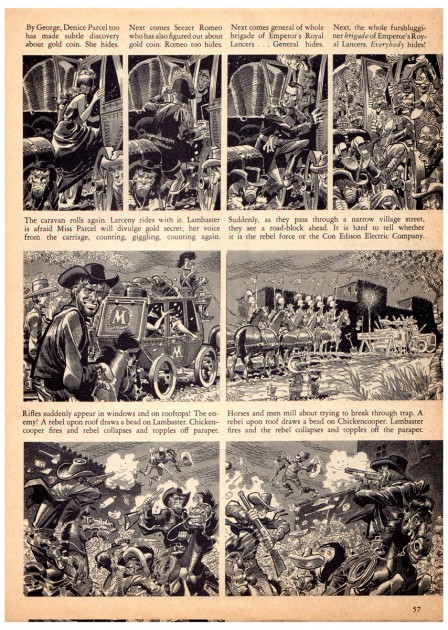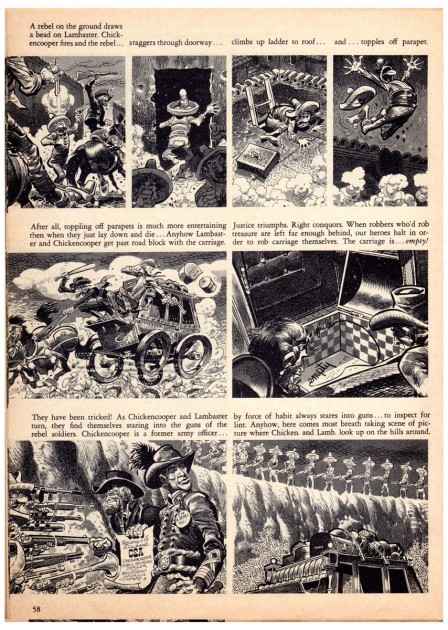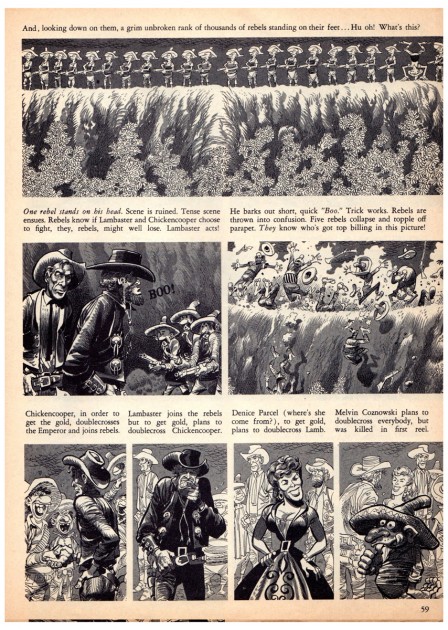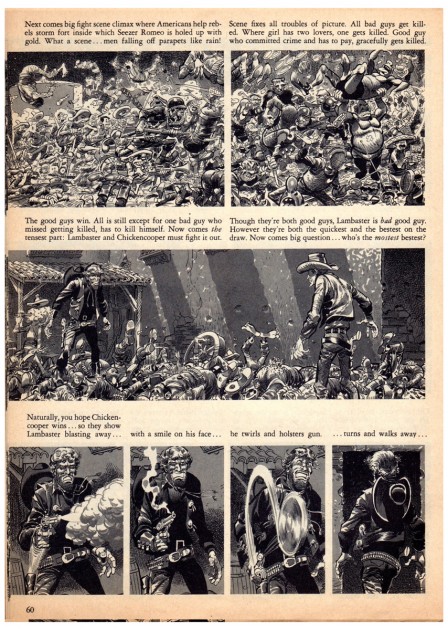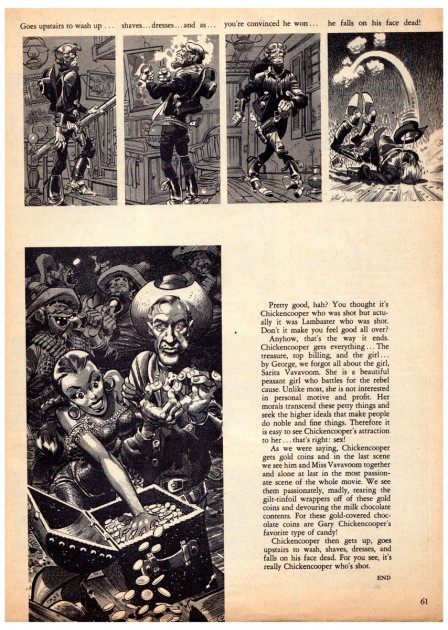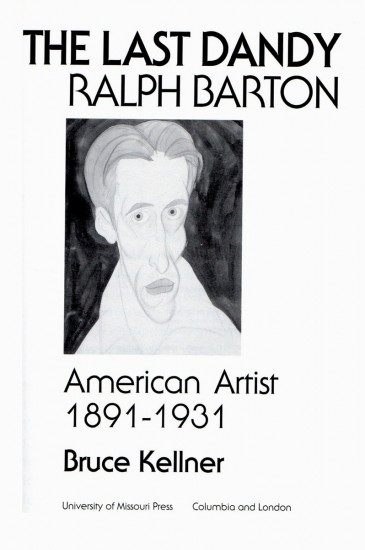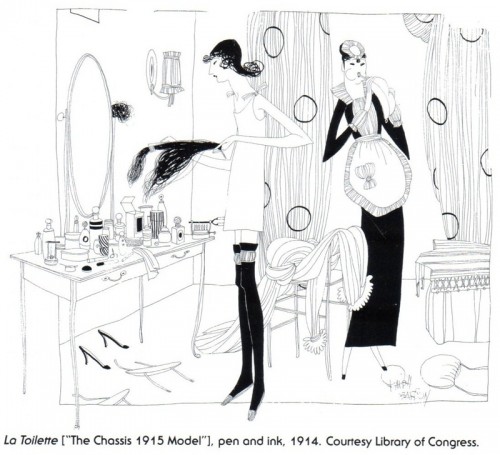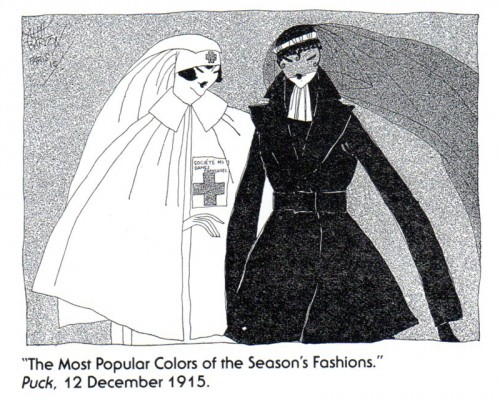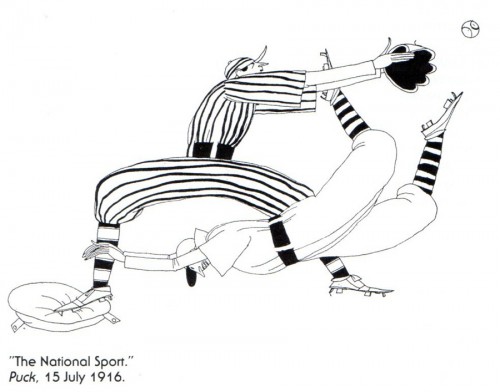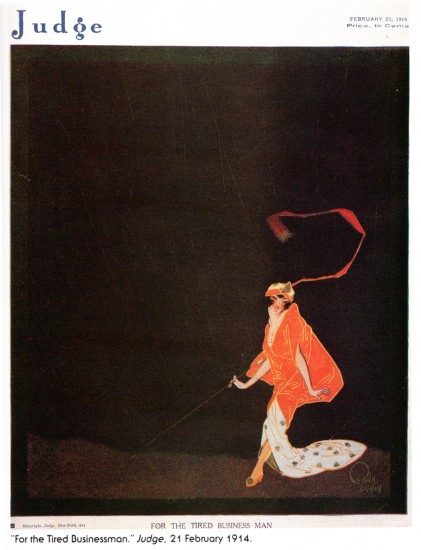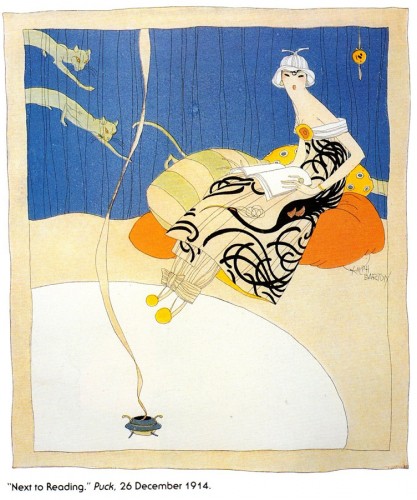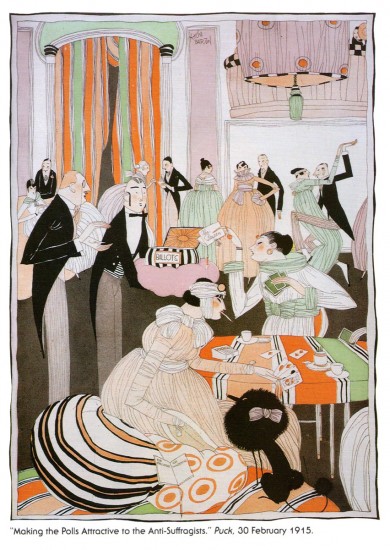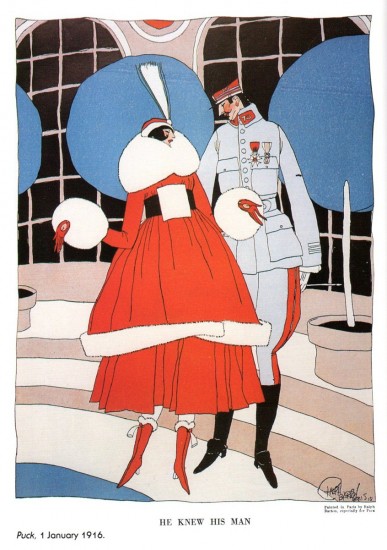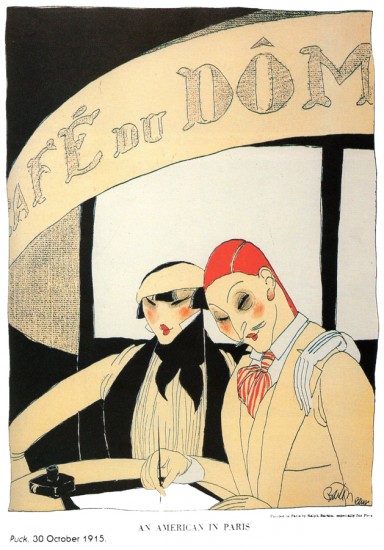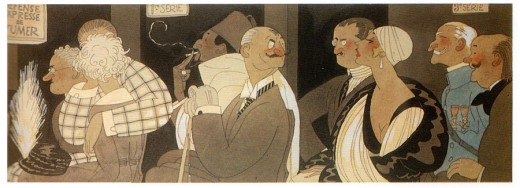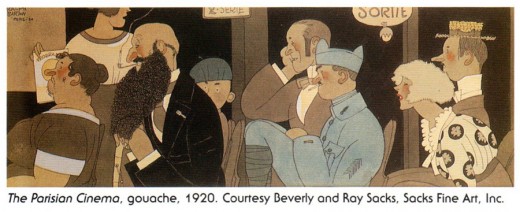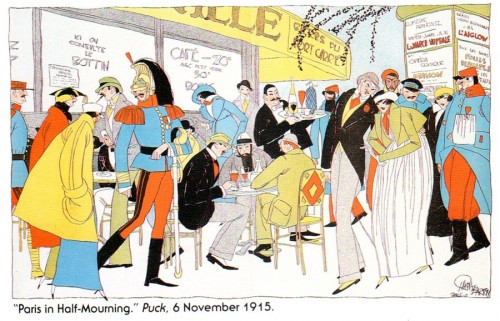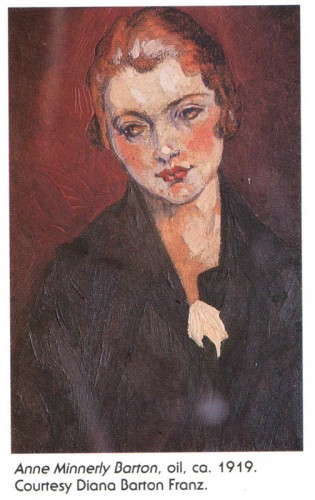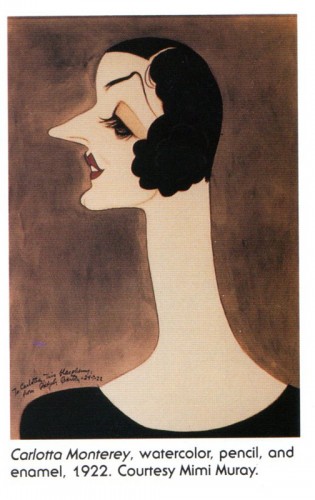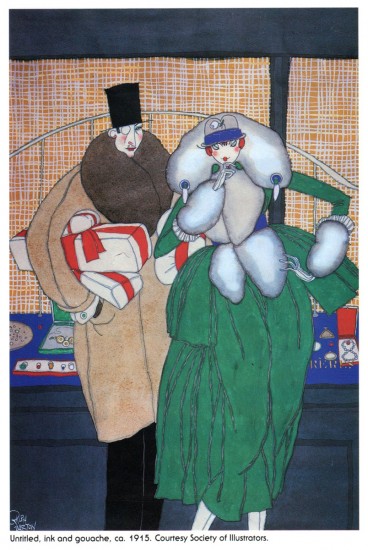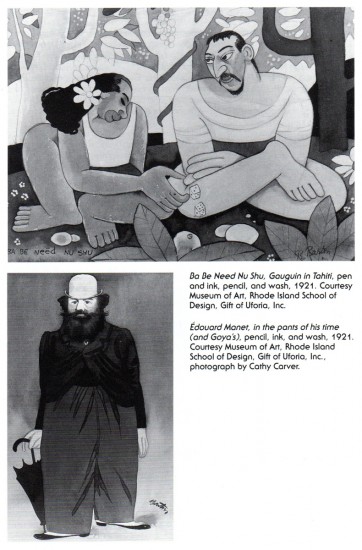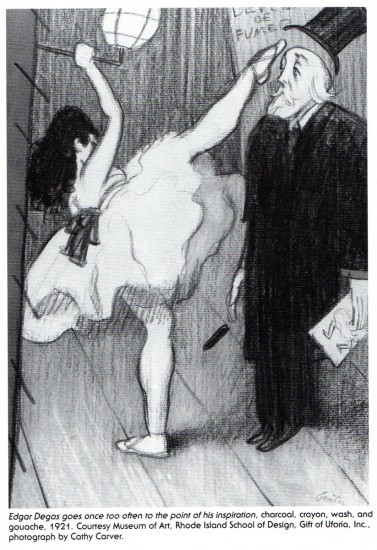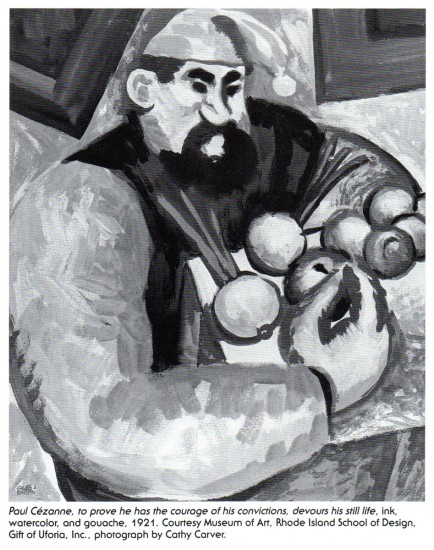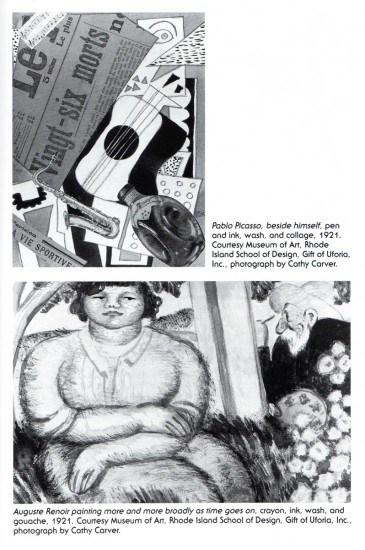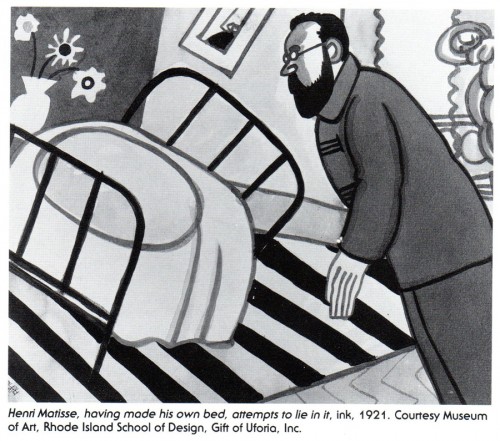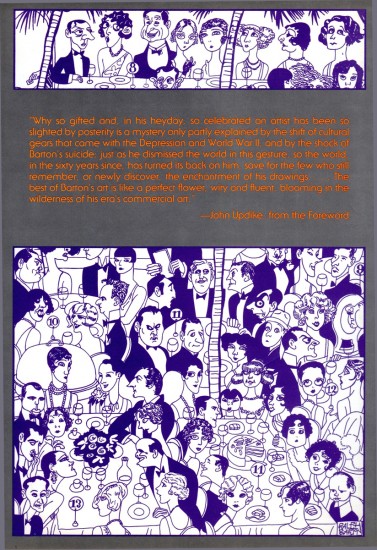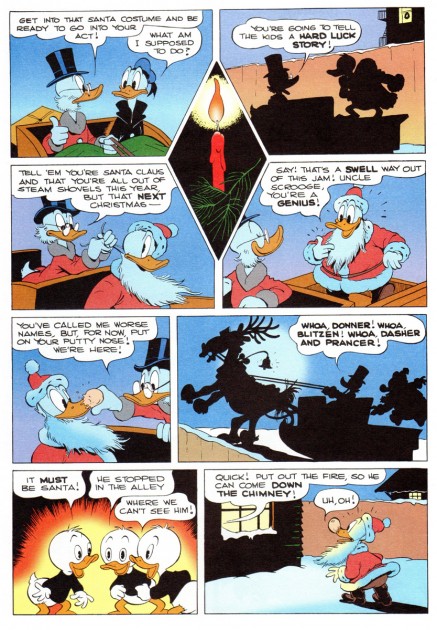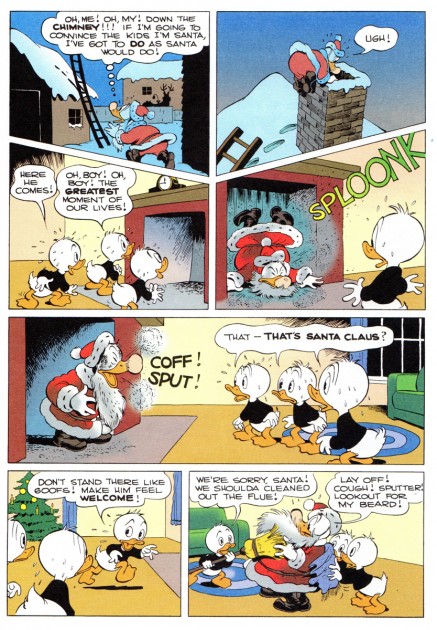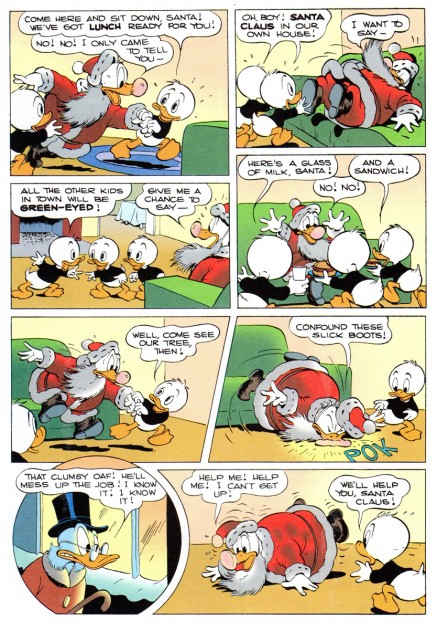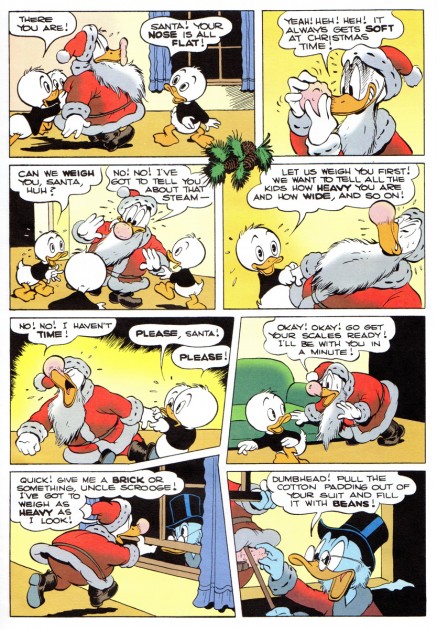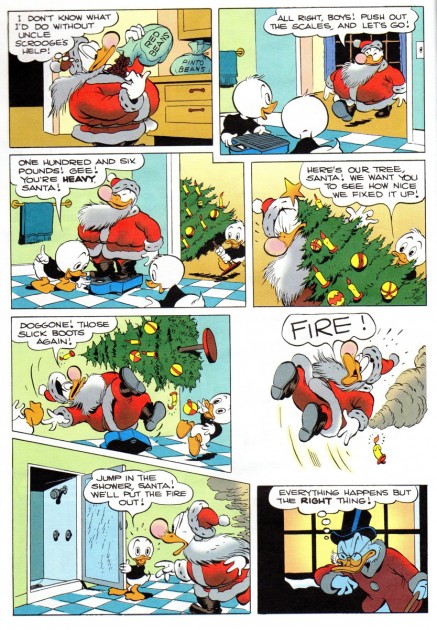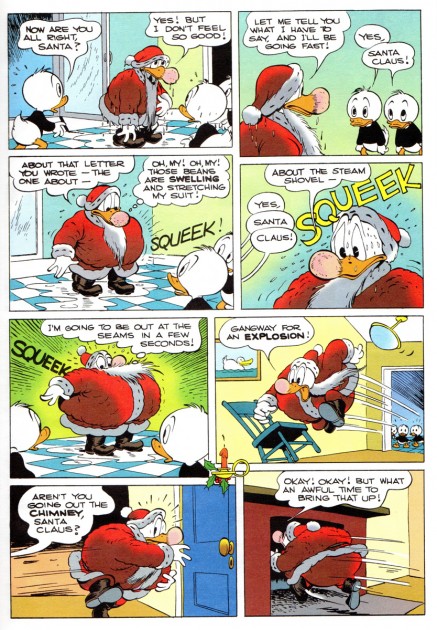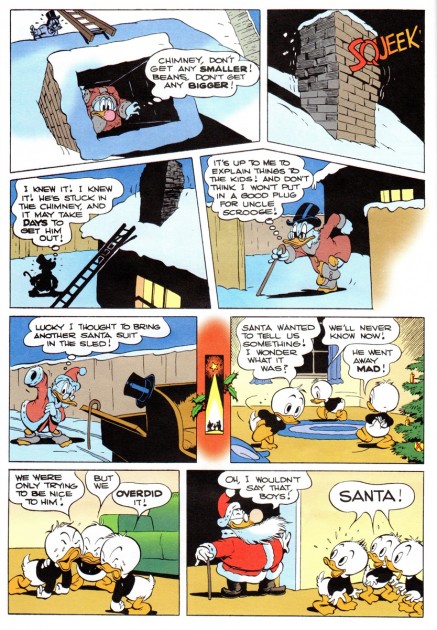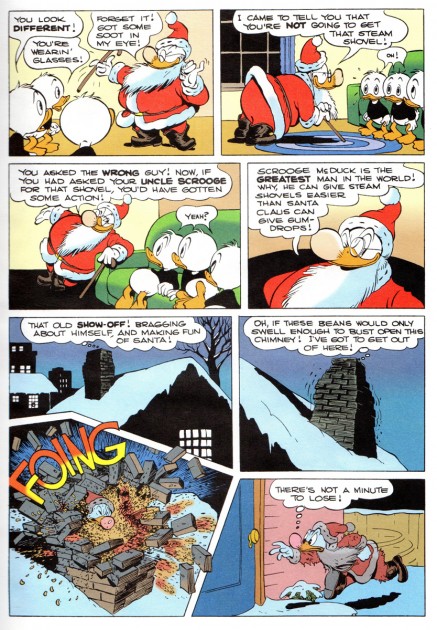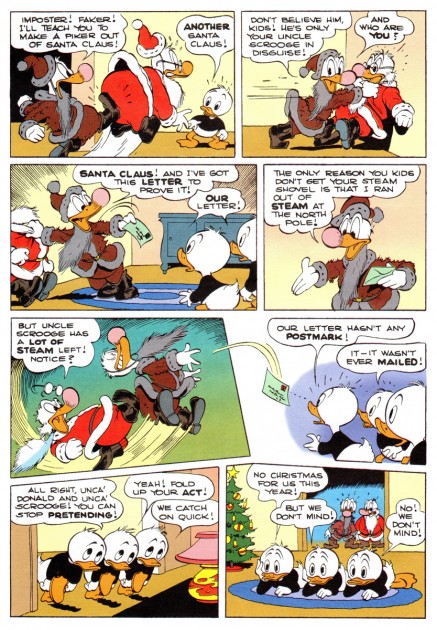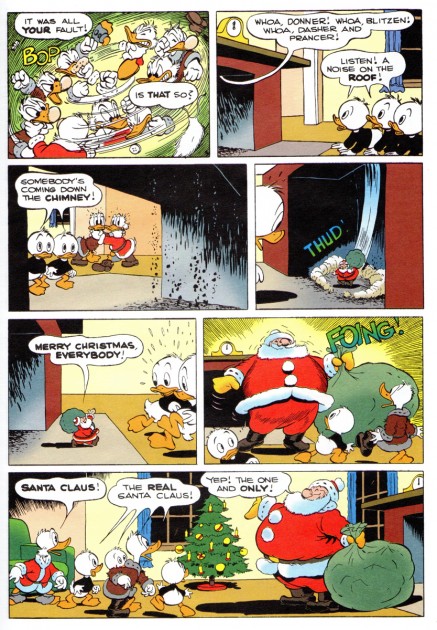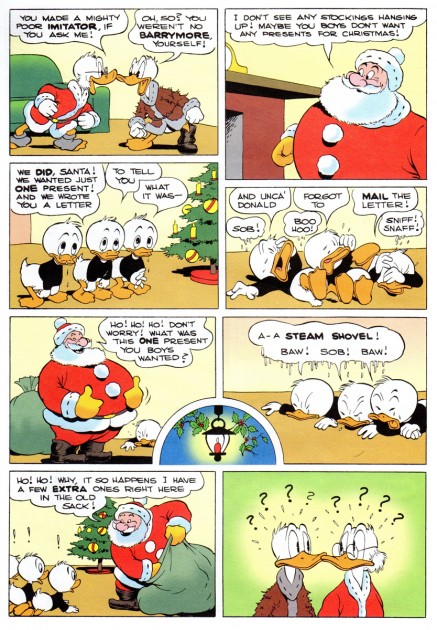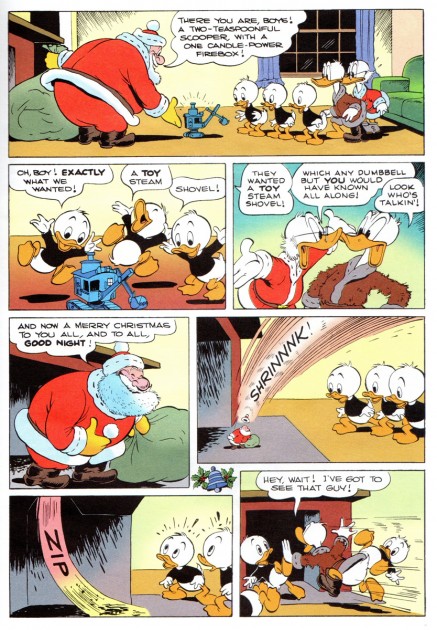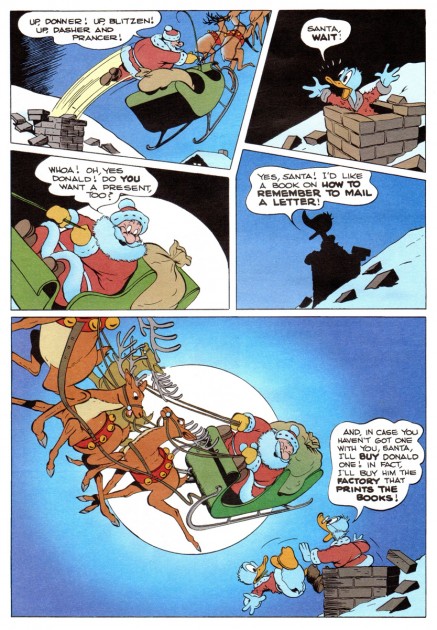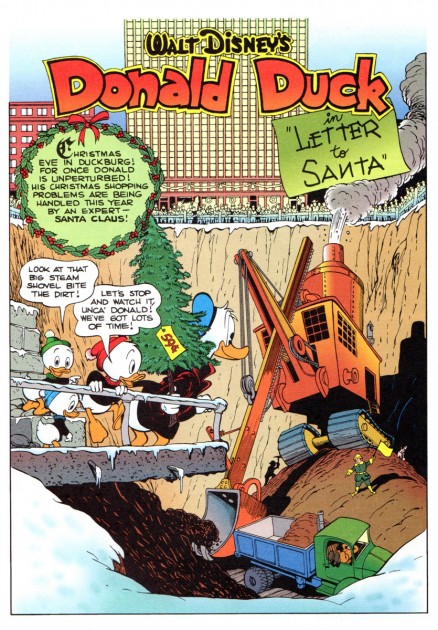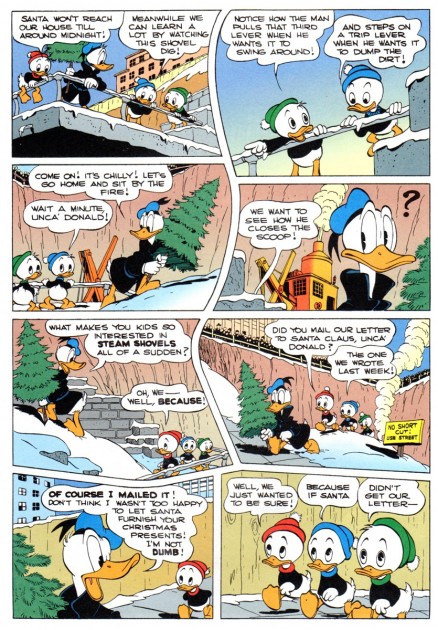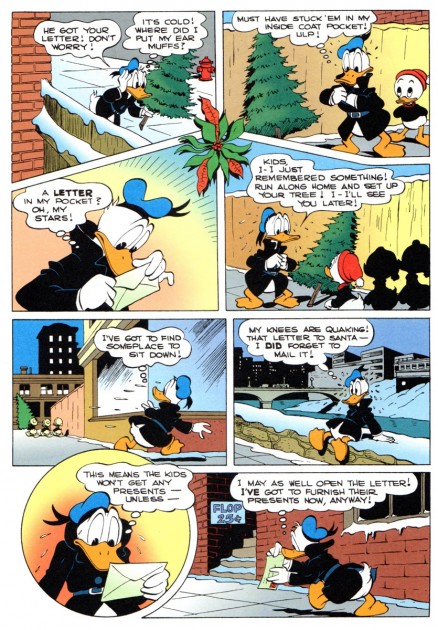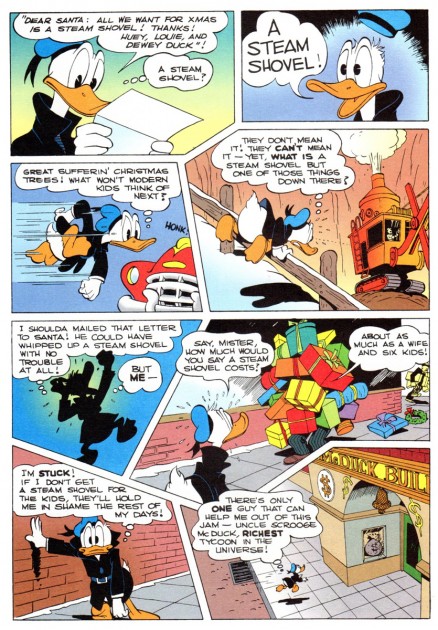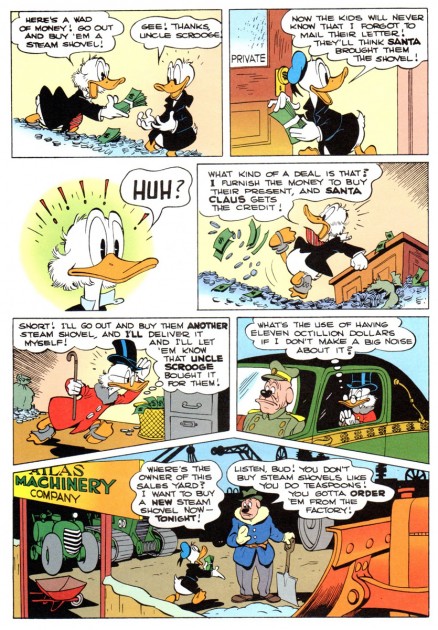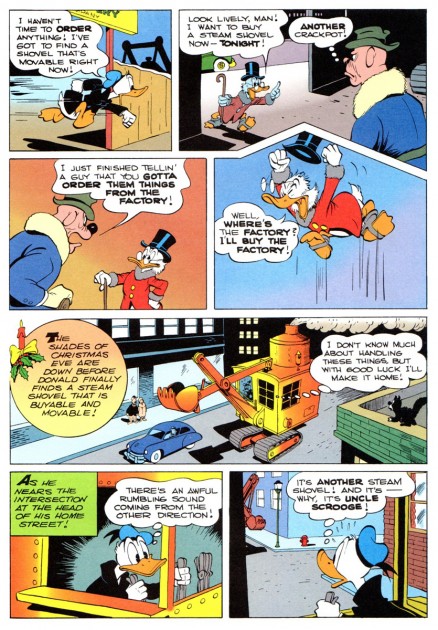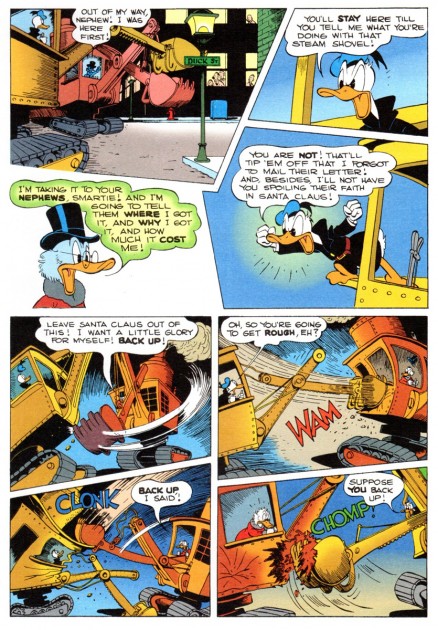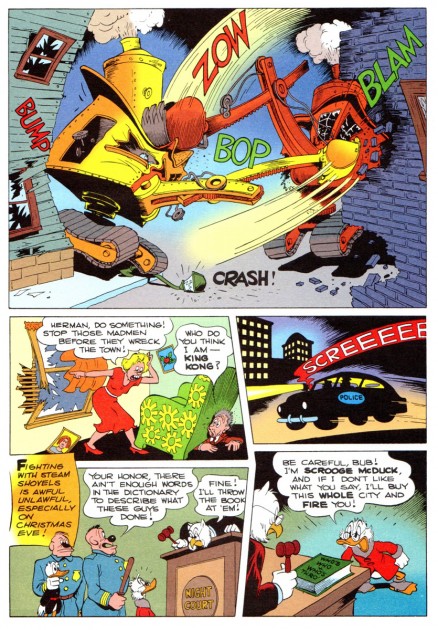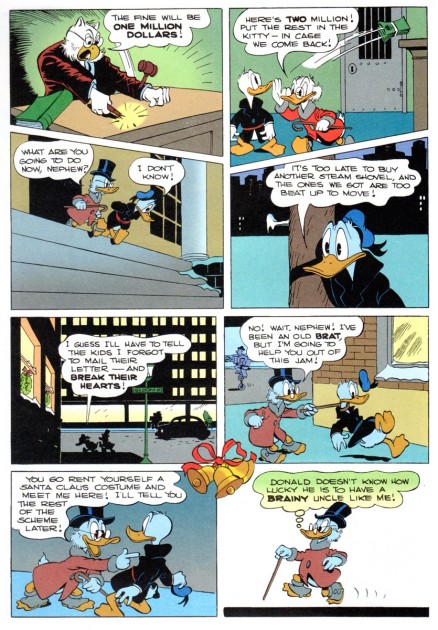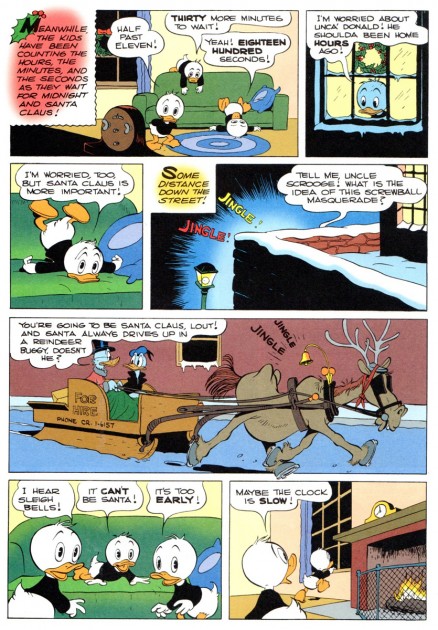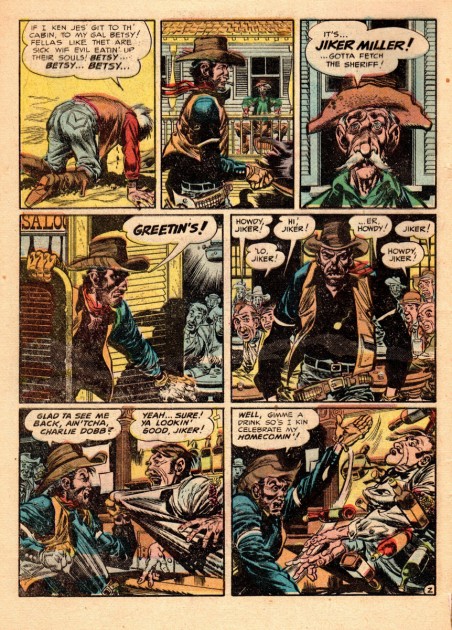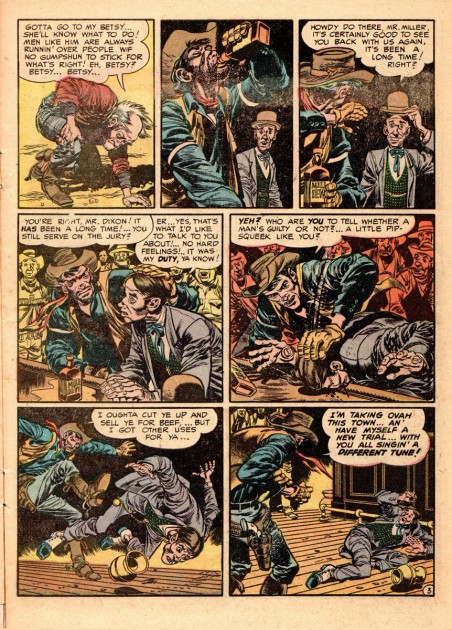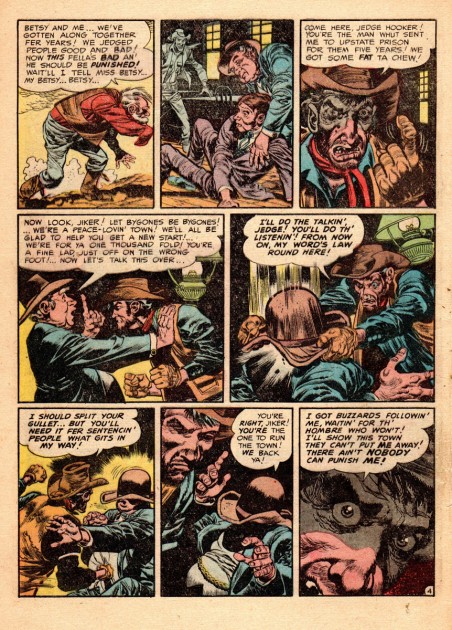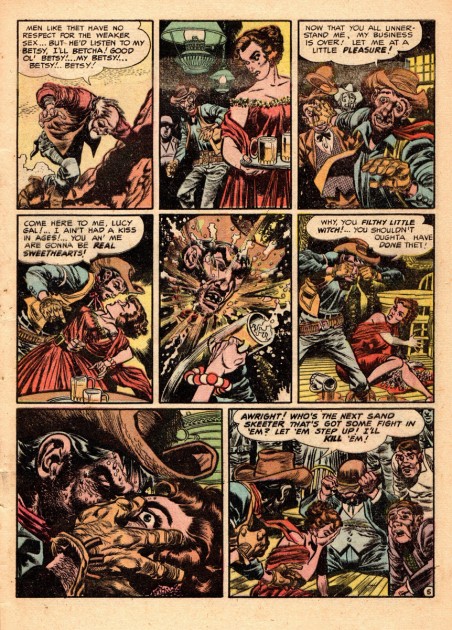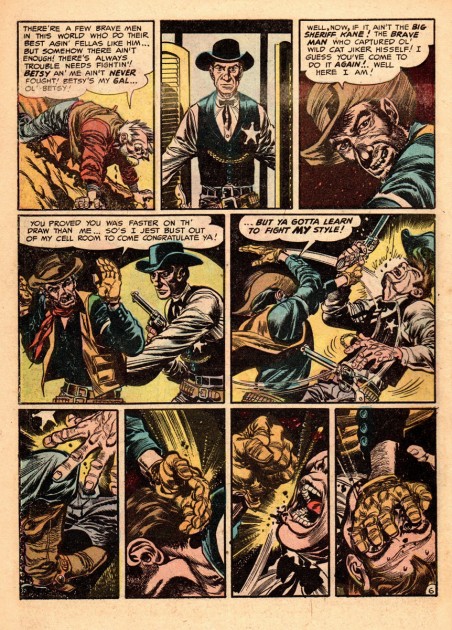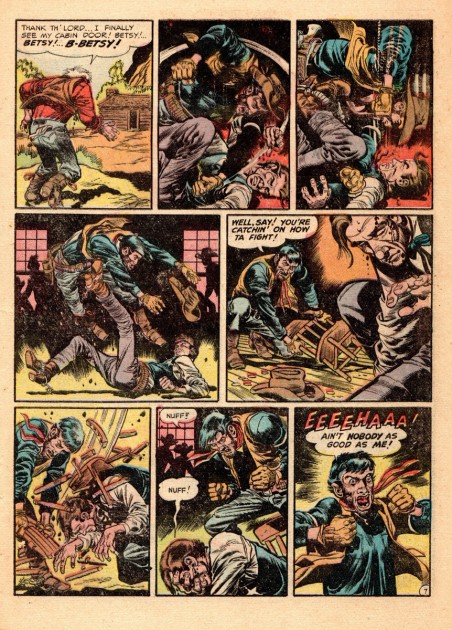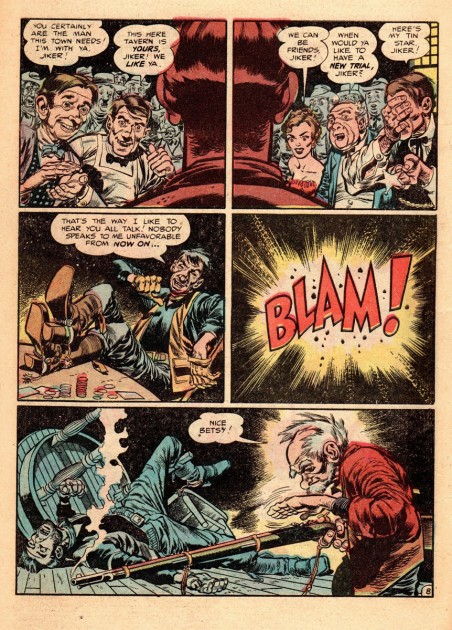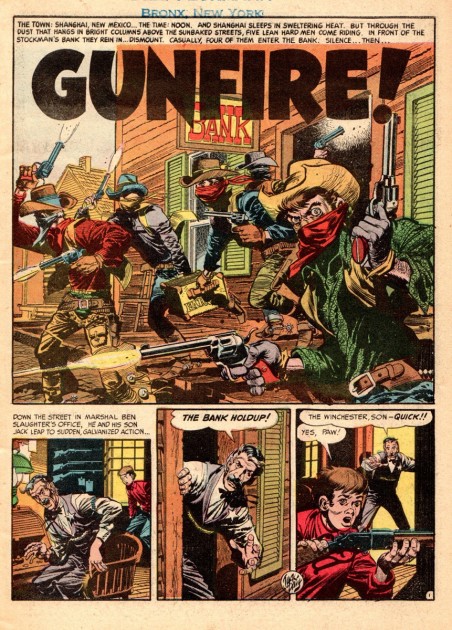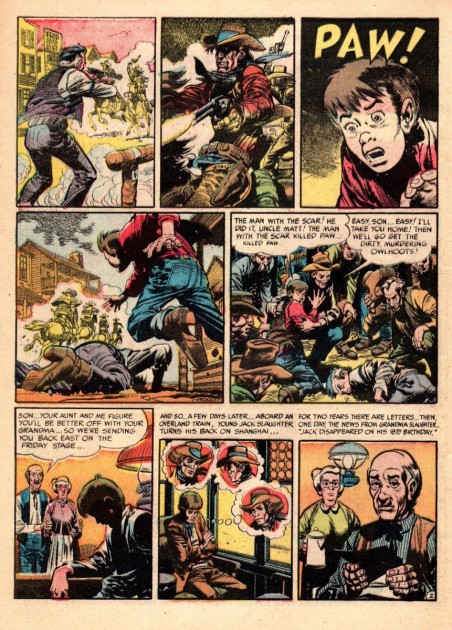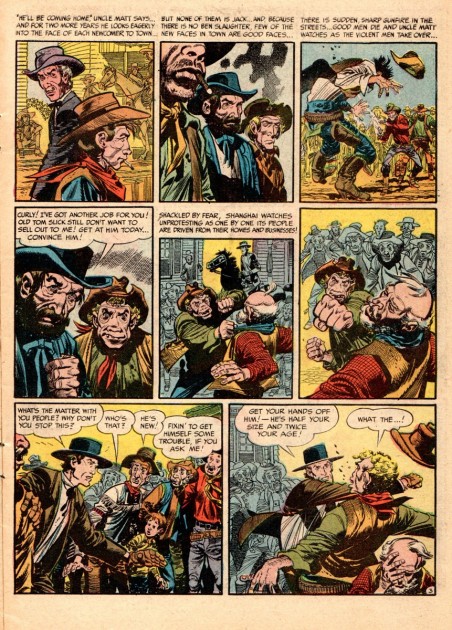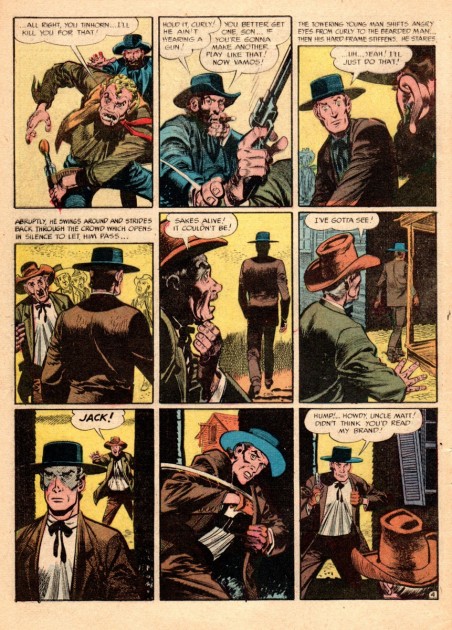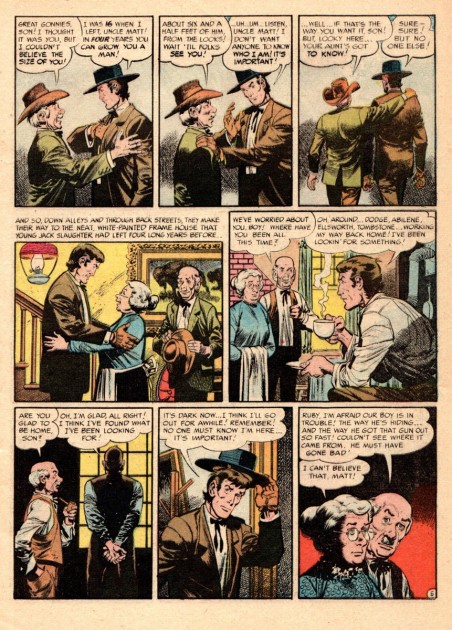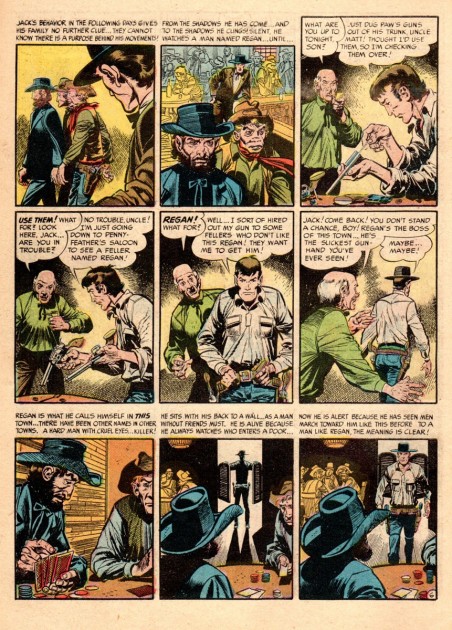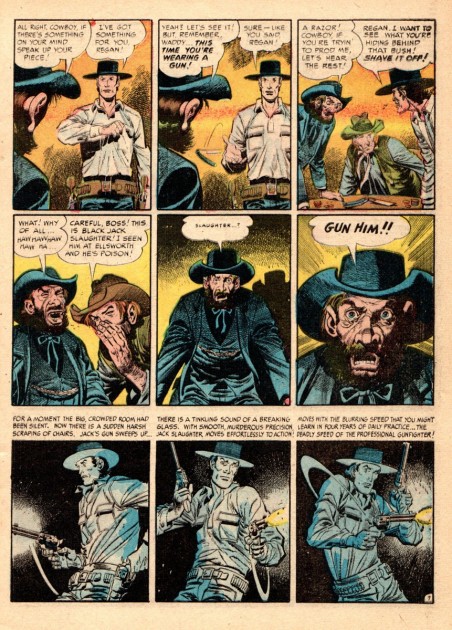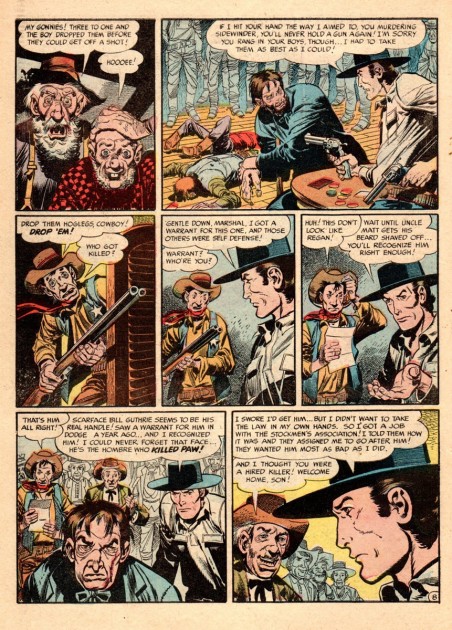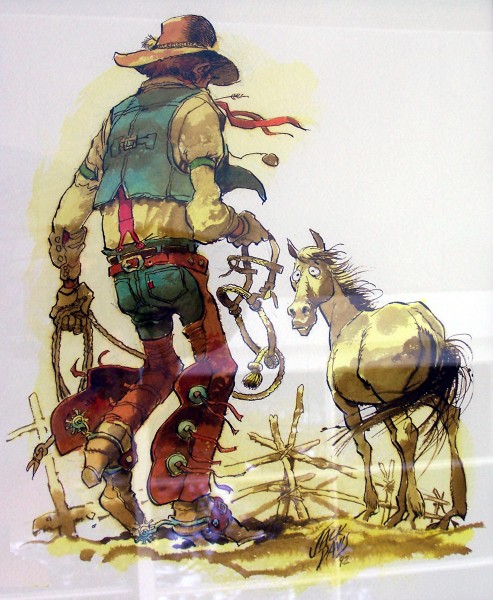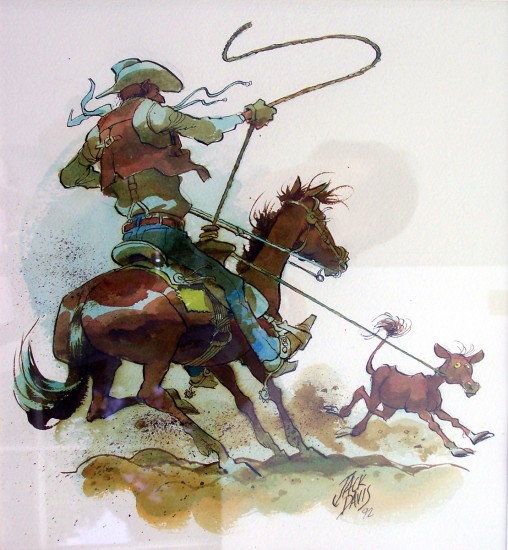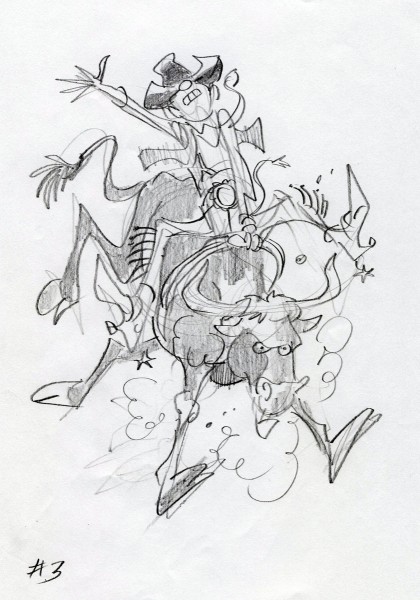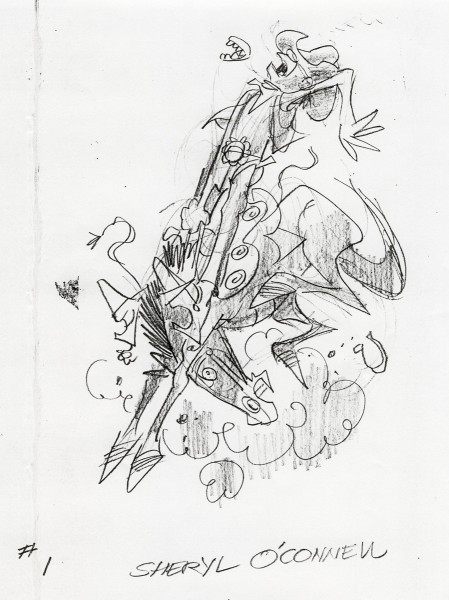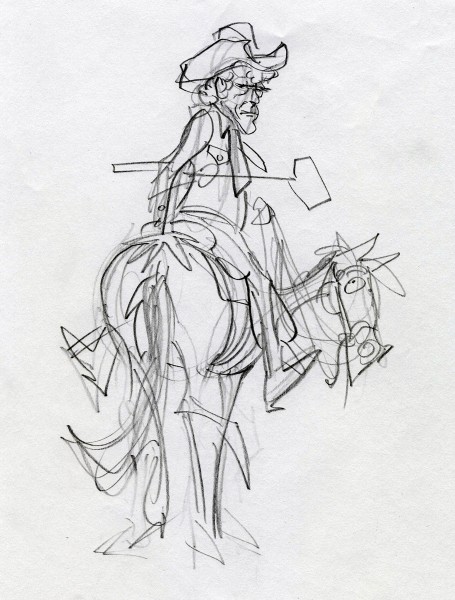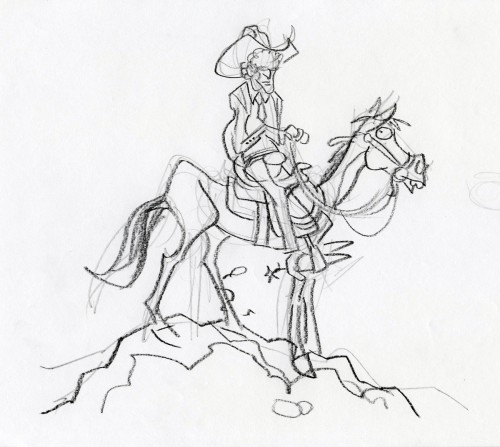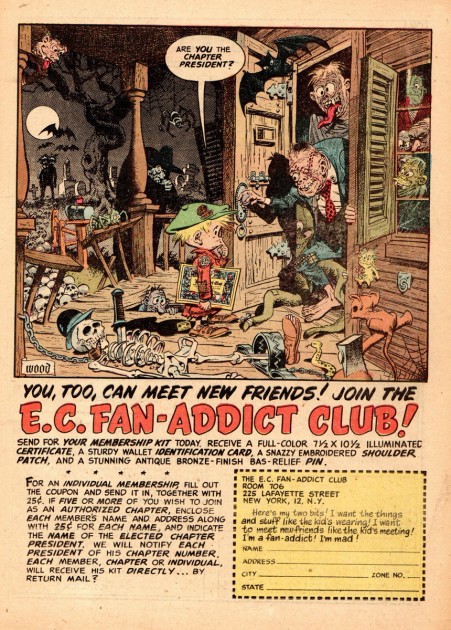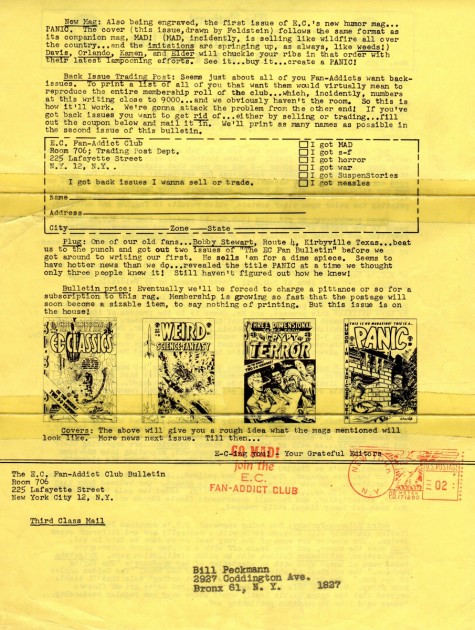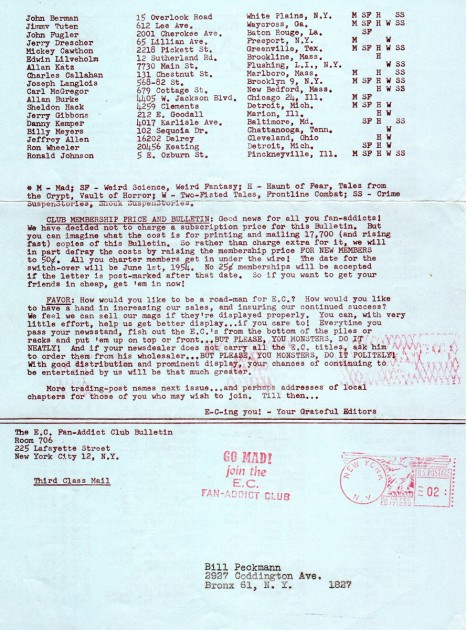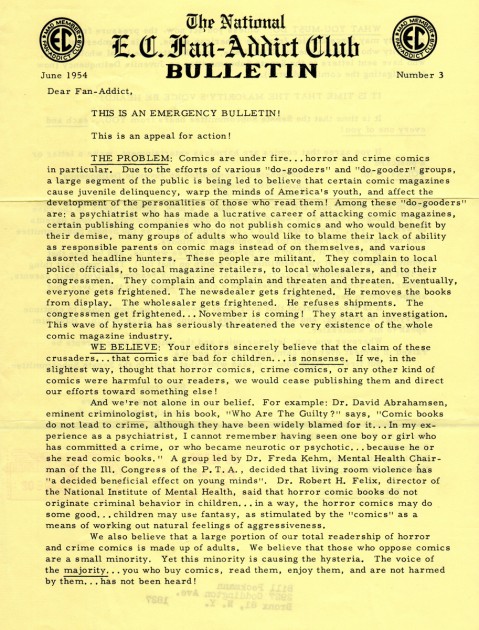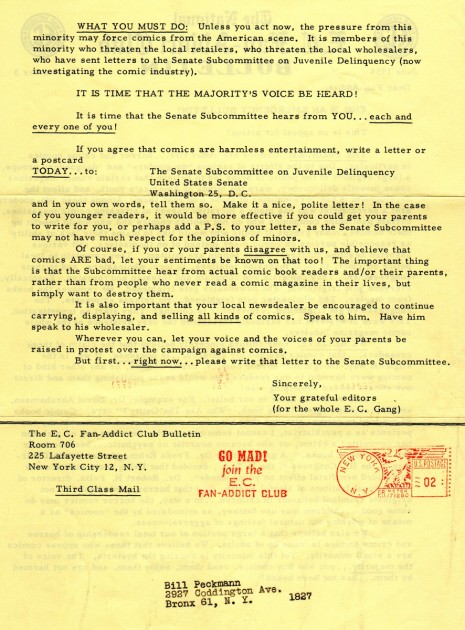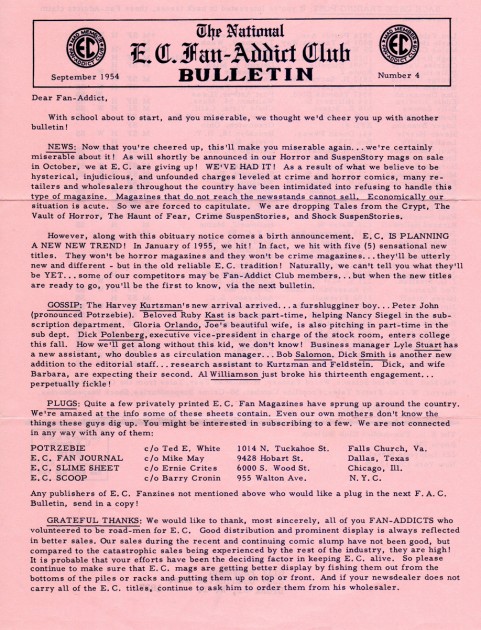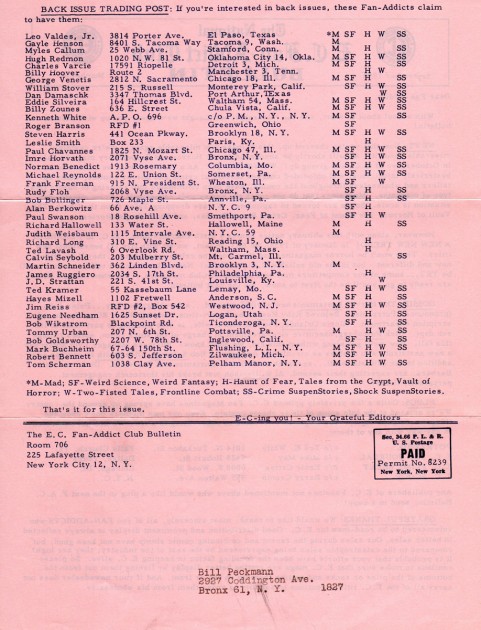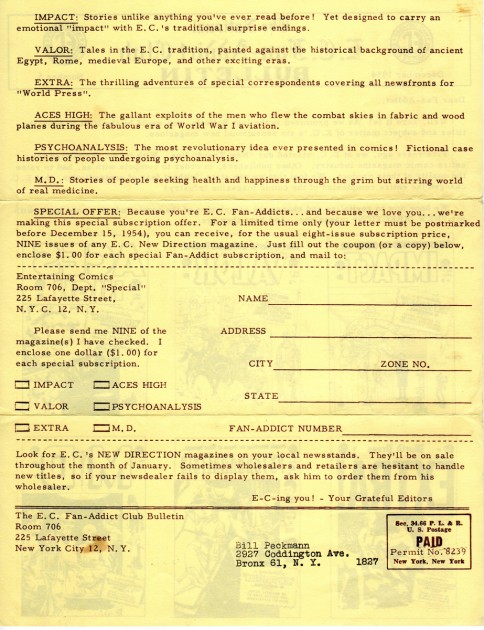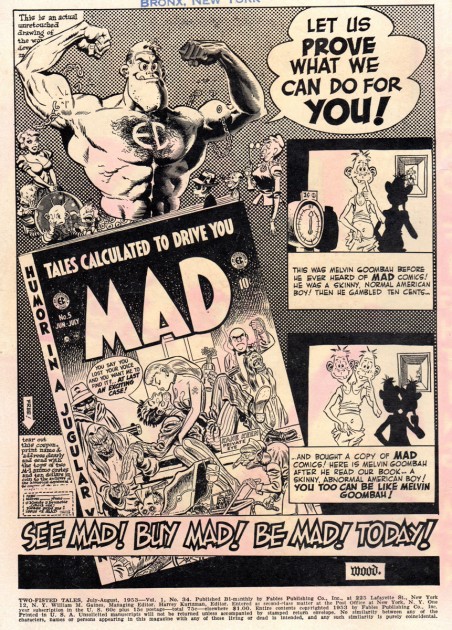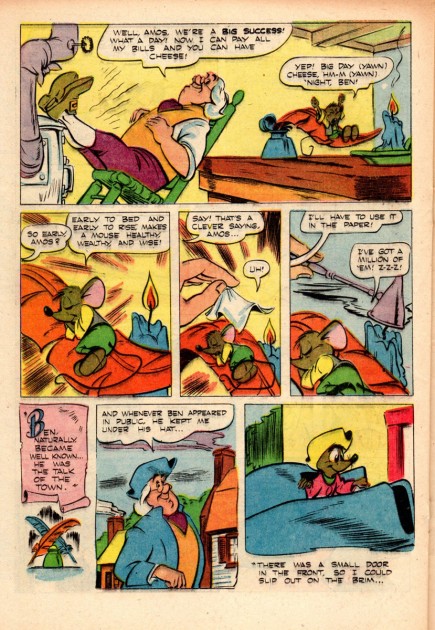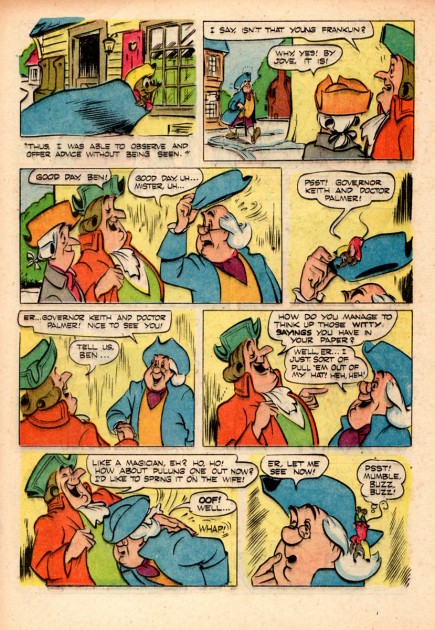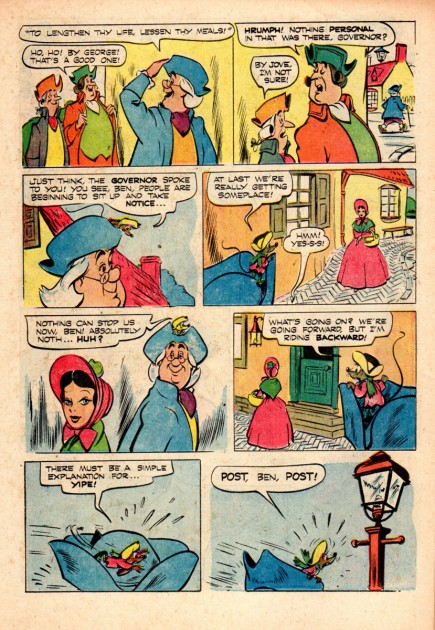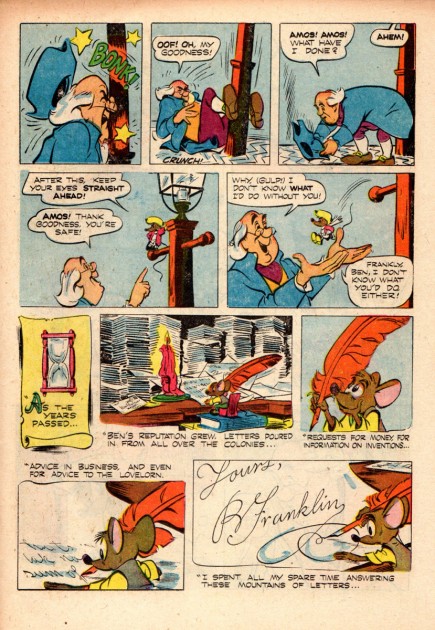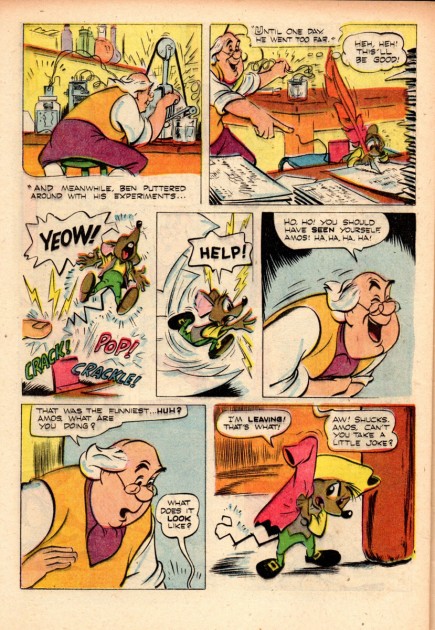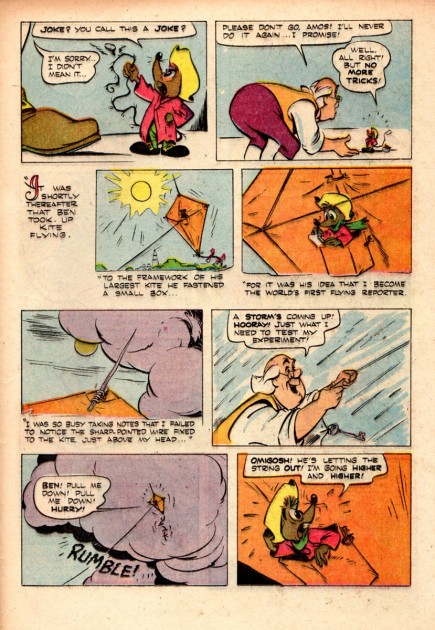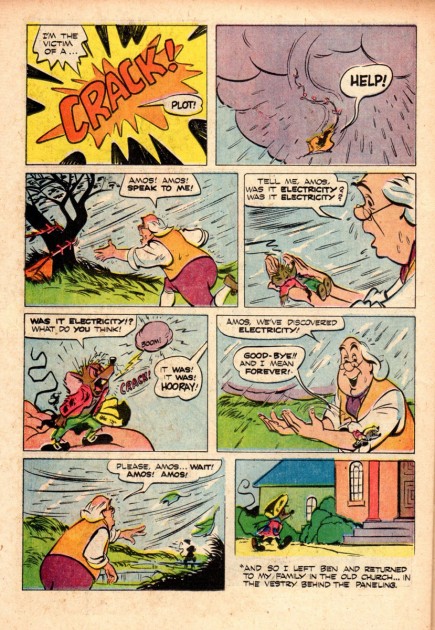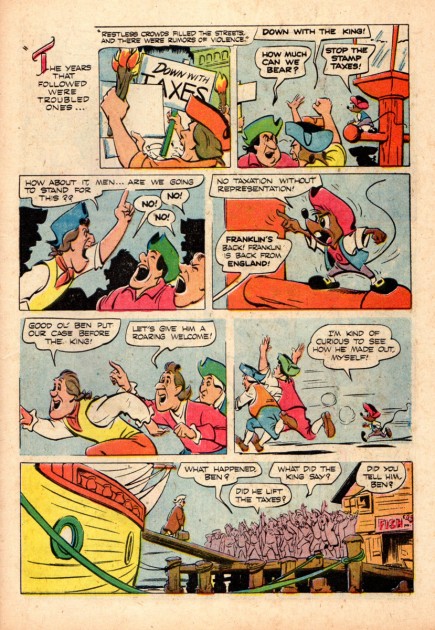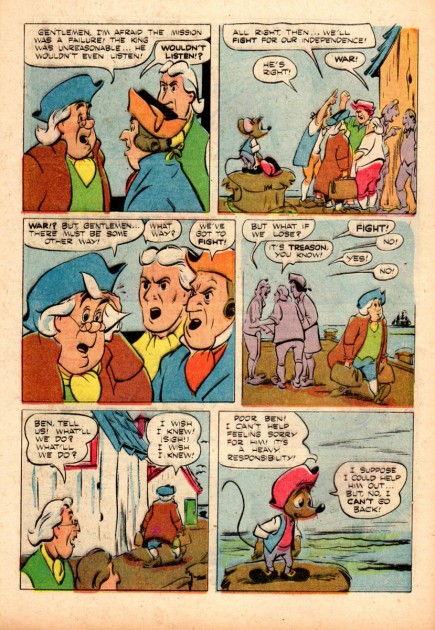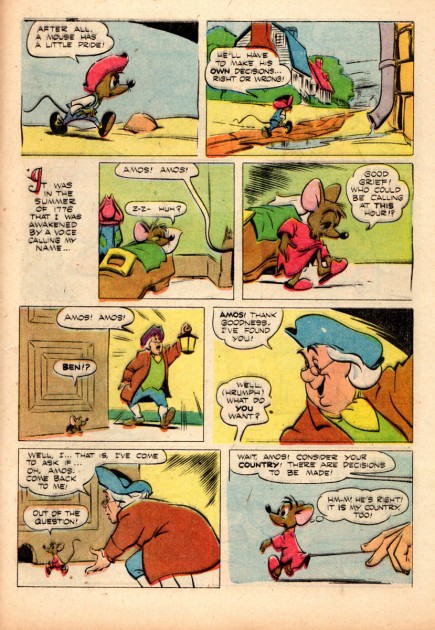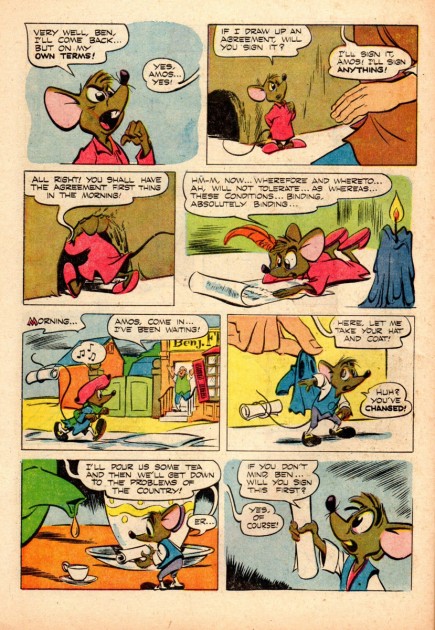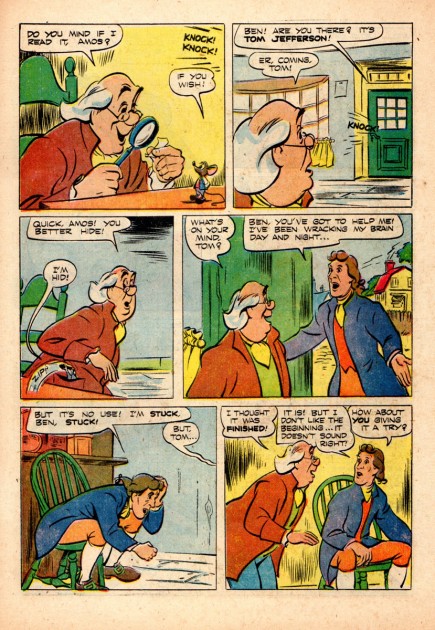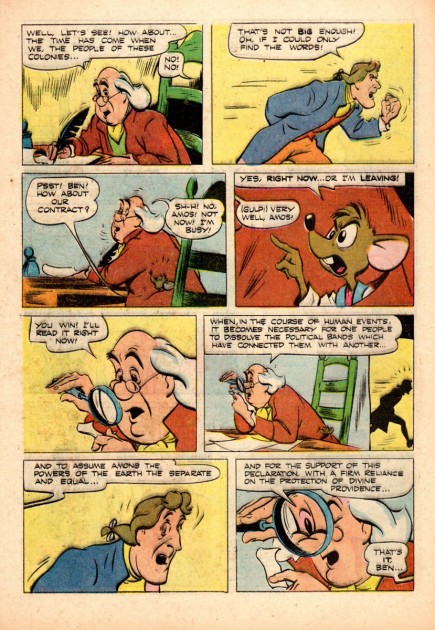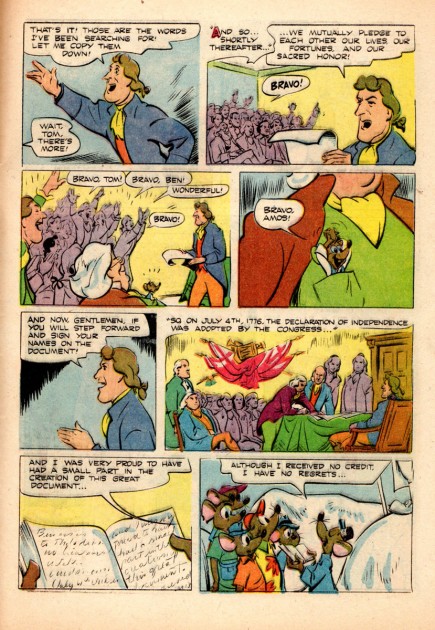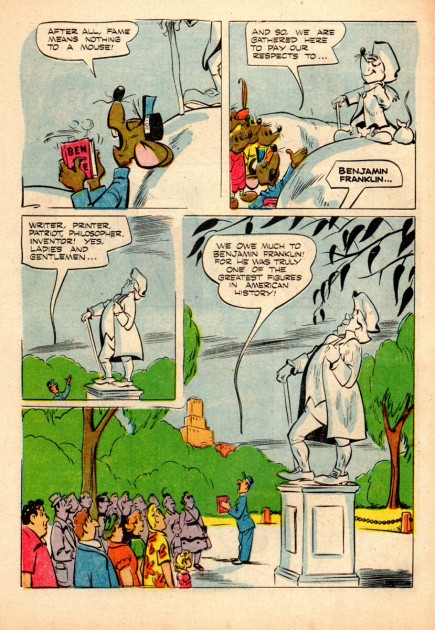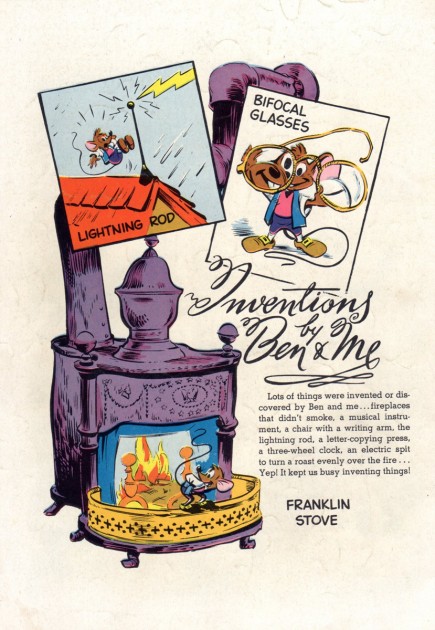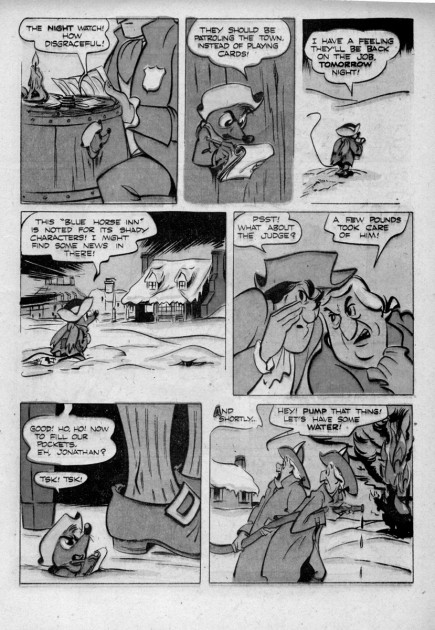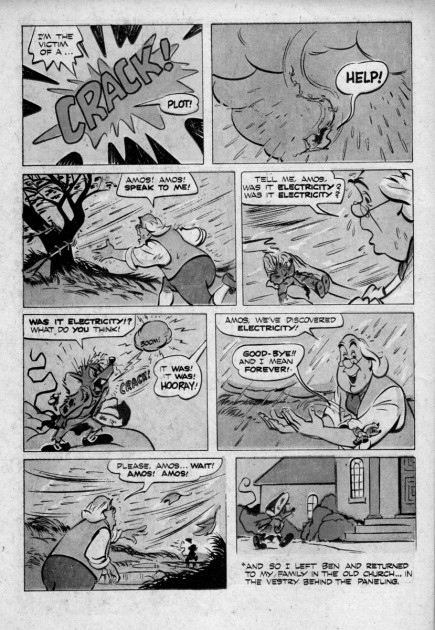Category ArchiveBill Peckmann
Bill Peckmann &Daily post &Illustration 10 Jan 2012 06:19 am
Ralph Barton – part 2
- This is the remainder of the book “The Last Dandy, Ralph Barton, American Artist, 1891-1931” by Bruce Kellner. Last week, thanks to the contribution and scans of Bill Peckmann, I was able to post the first half of the book. Today we complete it.
Barton served as an advisory editor to Harold Ross for his new magazine, The New Yorker. He was a major contributor to Judge, Collier’s and Vanity Fair Magazine. He was one of the most popular cartoonists of his day, and he illustrated many covers for books from Balzac to Anita Loos. He committed suicide in 1931.
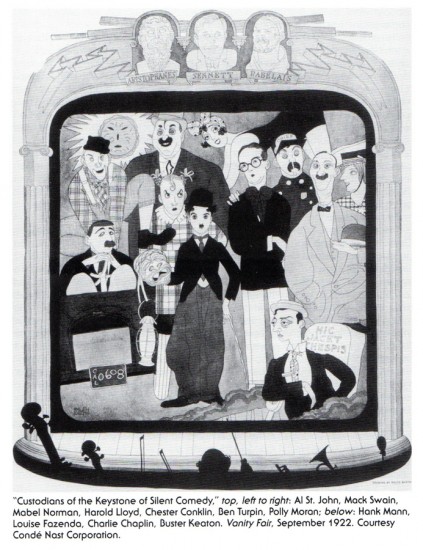 1
1
Bill Peckmann &Comic Art &Daily post &Illustration 06 Jan 2012 06:55 am
Toth’s Gun Glory – pt. 1
Gun Glory is a 1957 film starring Stewart Granger and Rhonda Fleming. Alex Toth in one of his adaptations to comic book brought some small beat of immortality to this movie, directed by Roy Rowland.
Here is the first of two installments of Toth’s magazine. Many thanks to Bill Peckmann for sharing this cowboy classic.
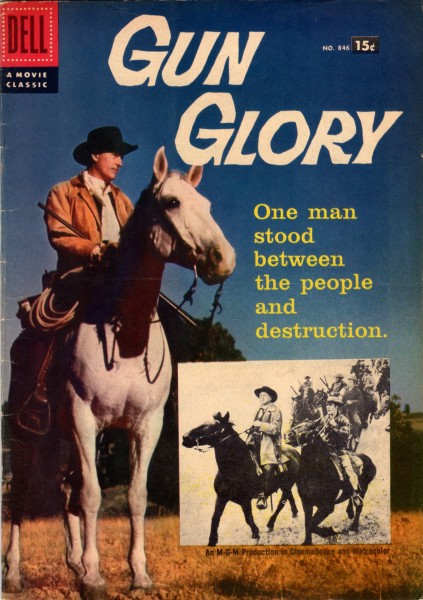
Comic book cover
Bill Peckmann &Illustration 05 Jan 2012 07:57 am
Toth Interview
- Bill Peckmann forwarded the following interview with artist, Alex Toth. The comments are by Bill:
- In the somewhat early days of comic book fandom, there was a class act fanzine titled “Graphic Story Magazine”, it was edited and published by Bill Spicer. In 1969 all of us Alex Toth fans were given a rare, in depth treat by way of an interview with Alex done by Bill. In the days before the internet and with just the means of out of pocket publishing, this professional looking, many paged interview was pure manna from heaven. Up until that time there were only a few capsulated bio’s printed here and there. Interestingly, the interview now is just a little over 40 years old, which is the same number of years as Alex’s age when the interview was given. It also marks an approximate half way point in Alex’s exceptional career. Enjoy.
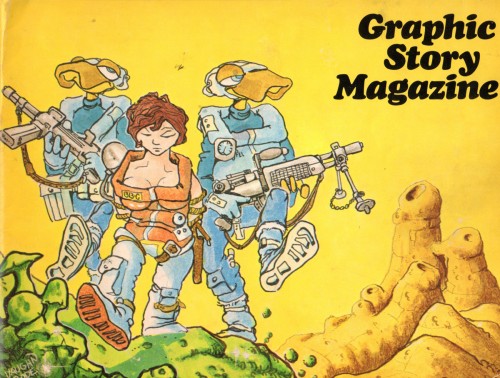 1
1(Click any image to enlarge.)
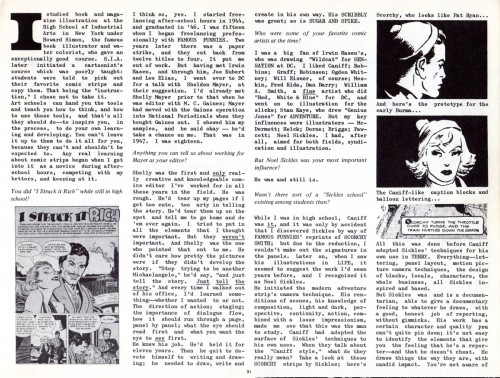 3
3
It seems that memories here were getting a little fuzzy on the dating
of the “I Struck It Rich” story. It was published in 1951 and not in the
1940′s when Alex was still in high school. He did amazingly professional
work while in high school, it just wasn’t this story.
Bill Peckmann &Comic Art &Illustration 30 Dec 2011 07:04 am
Kurtzman & Davis – Movie Spoofs
Bill Peckmann offers another collaboration between the two great cartoonist/illustrators, Jack Davis and Harvey Kurtzman. Over to Bill:
- “Gary Cooper”, an affectionate handle that was given to Jack Davis by his fellow EC Comics staffers back in the early 1950′s. The nickname fit well not only because of good looking Jack’s lean and lanky frame but also because of his impeccable easy going, gentlemanly manners. I’d take it one step further and say that just like Mr. Cooper who gave credence to any genre role he played in the movies (contemporary, sports, westerns etc.), so did Jack by excelling in any genre (crime, horror, humor, war) he drew in comic books!
What better way to bring the two together than in Harvey Kurtzman‘s spoofs of two very popular western movies of their day. “High Noon” and “Vera Cruz”.
So, with the help of Mr. Kurtzman, Mr. Davis and Mr. Chickencooper, here is “Hah! Noon!” from MAD comic book No. 9, 1954.
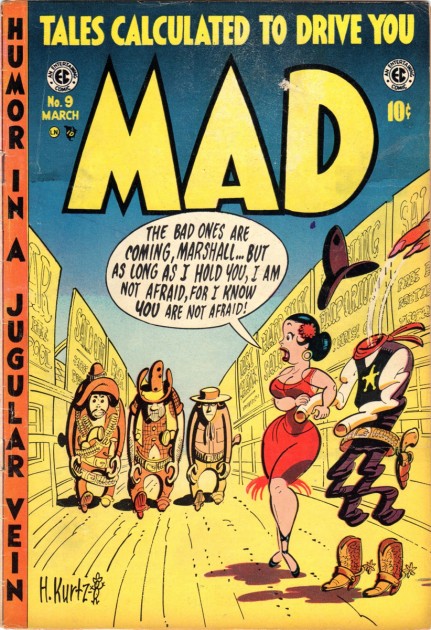
The cover
Here is “Vera’s Cruz” from the first MAD magazine, No.24, 1955. Both Harvey and Jack are in tip top form, (as always) in this, their first western movie spoof in the new black and white magazine format. (Funny,”Hah! Noon!” was the first caricatured movie send up that Kurtzman and Davis did together a year earlier in the comic book MAD.) In this new magazine format, our favorite funnymen duo were able to do a 10 pager compared to the usual 7 and 8 page stories they did in the comic book format, how they must have relished that!
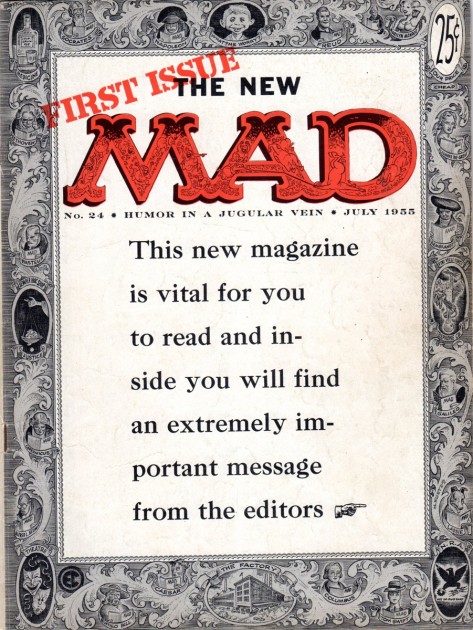
The cover
Many thanks, again, to Bill Peckmann for sharing his great collection with us.
Bill Peckmann &Books &Illustration 27 Dec 2011 06:35 am
Ralph Barton
- Last week, Bill Peckmann sent me scans from a book about artist, Ralph Barton by Bruce Kellner. I’d like to share some of that book with you. I don’t know much about Mr. Barton or his work, but some of his images are arresting. Here’s what Bill wrote:
- After looking at all of those perusable pages of Disney and EC comic books, I thought that maybe you’d like a change of pace and look at something else, namely the work of artist/caricaturist Ralph Barton.
This intro should have been written by Rowland Wilson, because Rowland was a huge fan of Barton’s and was kind enough to give me this book.
The title of the book is “The Last Dandy, Ralph Barton, American Artist, 1891-1931” by Bruce Keller, published 1991. It’s a very thorough biography of Ralph Barton, with terrific illustrations that show what a great artist he was in the 1920′s. During that time he appeared in The New Yorker, Vanity Fair, Harper’s Bazaar and Photoplay magazines.
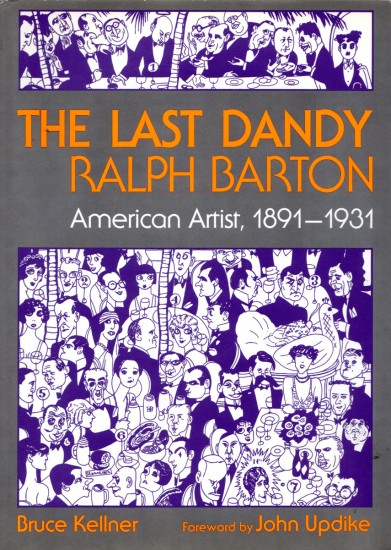
the book’s front cover
Bill Peckmann &Comic Art &Disney 23 Dec 2011 06:57 am
A Sumptuous Barksian Christmas Feast – part 2
- It’s Christmastime. The perfect time to fall under the spell of Carl Barks for a few moments. Here’s the second and final installment of the piece started yesterday, “A Letter to Santa”, published in 1949 as the comic book titled, A Christmas Parade. This comes courtesy of Bill Peckmann who scanned the cover from the original magazine, but the story was taken from the reprinted and recolored version. Many th\anks to Bill for sharing this treat.
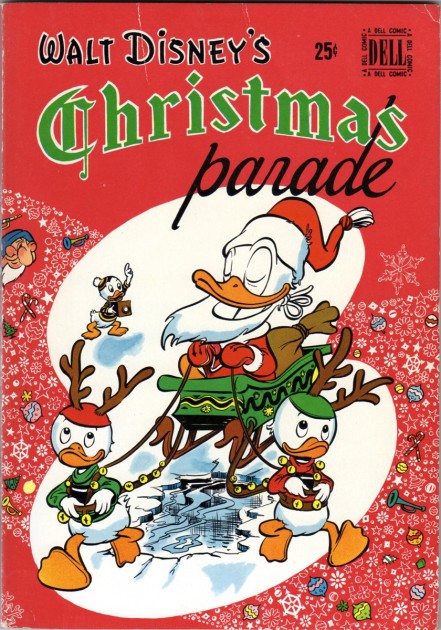
The cover, pencilled by Walt Kelly.
Merry Christmas
Bill Peckmann &Comic Art 22 Dec 2011 06:26 am
A Sumptuous Barksian Christmas Feast – part 1
Bill Peckmann offered a holiday treat. A Carl Barks, Donald Duck story. It’s a bit on the long side, so I have to break it into two posts; I’ll complete the piece tomorrow. It’s a cliff hanger. Meanwhile, many thanks to Bill who writes:
- Here’s the cover of original comic book, “Walt Disney’s Christmas Parade” No. 1. It came out in 1949, it was one of the first 25 cent Disney comic books that I can remember. The price really put a dent in a kid’s pocket from that era, but at over 100 pages it was worth every cent!
The biggest gift in the first issue of “Christmas Parade” was of course Carl Barks’ 24 page Donald Duck “in Letter to Santa” story. There’s nothing more natural than having Scrooge McDuck in a Christmas story and fortunately nothing more natural than Carl being at the top of his game in 1949. It’s one of the best of the best!
(Note, I’m not scanning the story from the original comic book, I just didn’t have the heart to break the square binding of the old comic book. The scanning will be of a Gladstone Publishing reprint. Purists and anti-gradationists will probably be unhappy with that but it still is a handsome job when seen on the computer screen and Carl’s line work sings.
Second note, there’s also some Jesse Marsh art in the issue. He illustrated the text of “So Dear To My Heart”. Seven illo’s. I’ll see if I’ll be able to scan those without damaging the book.)

The cover is listed as being penciled by Walt Kelly.
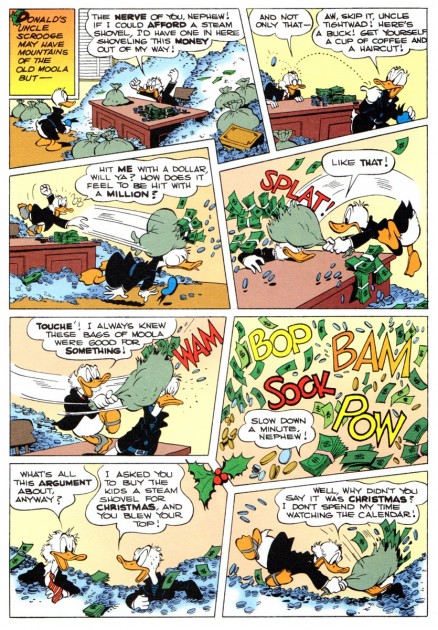 5
5
This is one of the very early appearances of
Uncle Scrooge McDuck in a Barks story, so he
isn’t quite the character yet that we came to know and love.
Bill Peckmann &Comic Art &Daily post 16 Dec 2011 07:16 am
King of the Cowpokes
Another excellent post from the collection of Bill Peckmann. Here, I turn it over to Bill:
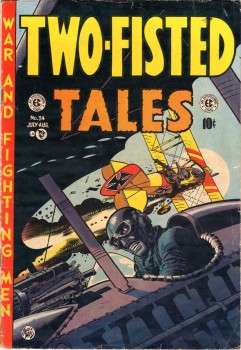 “King of the Cowboy Cartoonists”. If there was ever such a title, Jack Davis would garner my vote!
“King of the Cowboy Cartoonists”. If there was ever such a title, Jack Davis would garner my vote!
Here are two westerns by Jack that ran in EC Comics’ title “Two-Fisted Tales”.
In “TFT” No. 34, July-Aug 1953, the first story “Betsy”, was not only drawn by Jack but also written by him. The usual editor/writer of the comic book Harvey Kurtzman, was laid up with a serious illness, so Jack and the rest of the cartoon crew jumped in and wrote their own tales.
Jack’s story “Betsy” is a riff on “High Noon”, a very popular movie of its’ day. (Gary Cooper even makes a cameo appearance in the story. More on that in a later post.) It’s a labor of love for Jack and it shows. It’s laid out by him in that wonderful Kurtzman lay-out style and the coloring by Marie Severin is really exceptional.
Jack also seems to be ahead of his time with this story because it’s done quite a few years before the gritty, gnarly noir western movies of Clint Eastwood, but it certainly has the feel of one those films.
(Here’s the cover of the comic, which we’ve posted already, but you might want to run it at smaller size, ala “Ben and Me” today. I hope your readers enjoyed “Ben” as much as we did.)
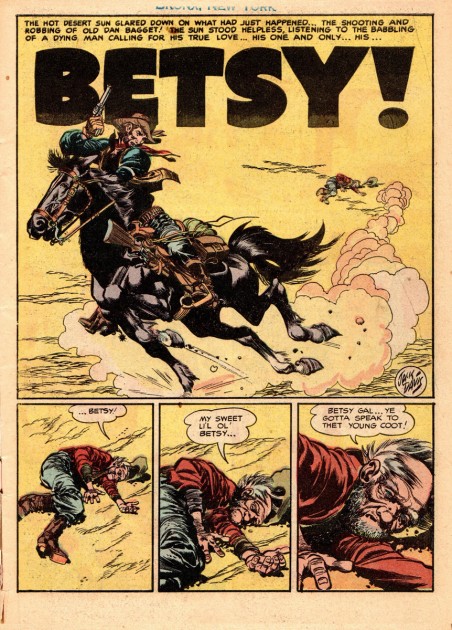 1
1
Here’s Jack’s second western story titled “Gunfire”. This appeared in “The New Two-Fisted Tales”, No. 36, Jan. 1954. With this issue, Harvey Kurtzman was not at the writer/editorship helm of the comic any more, the success of Mad comics took up all of Harvey’s time, and the running of “The New TFT” went to John Severin and writer Colin Dawkins.
“Gunfire” was written by Dawkins and illustrated by Jack, and Jack’s in his best Kurtzman type lay-out mode, beautifully constructed pages and panels.
(Even though Clint Eastwood was only 23 years old at the time when this story came out, and not a movie star yet, somehow Jack was able to come up with the perfect prototype of a Clint Eastwood western hero. It’s all there, looks and costume and action! It makes ya wonder.)
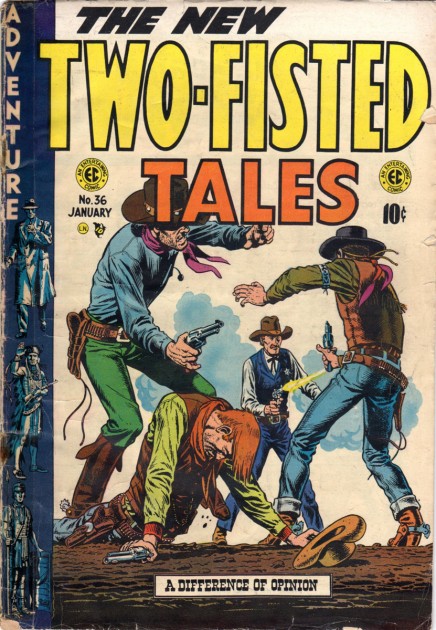
Here’s the cover of #36.
This cover of “The New Two-Fisted Tales” no. 36
was penciled by John Severin and inked by Bill Elder.
It’s not a Jack Davis cover.
Here are a couple of ruffs Jack did for Western illustrations.
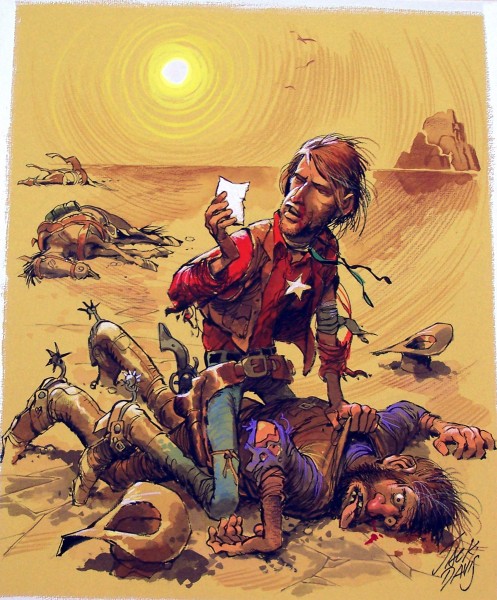 1
1
Many thanks to Bill Peckmann for sharing his collection with us.
Bill Peckmann &Comic Art 15 Dec 2011 06:45 am
EC Fan-Addicts
Here’s a package I received from Bill Peckmann:
- In the parlance of the old MAD editors: “Hey gang, here’s some very unnecessary nostalgia for ya!”
In their heyday, EC Comics’ hardcore readership always kept the letter columns of EC Comics packed with enjoyable, knowledgeable comments. (I’d always go to the letter columns before I would read the stories in the comic.) With those kind of responses coming in, someone at EC, fortunately came up with the idea of starting an official EC fan club in the best EC tradition. (Looking back on all this, EC always seemed to be ahead of the curve in the industry and would adapt thru all of their trials and tribulations, the proof in the pudding is the incredible run of MAD.)
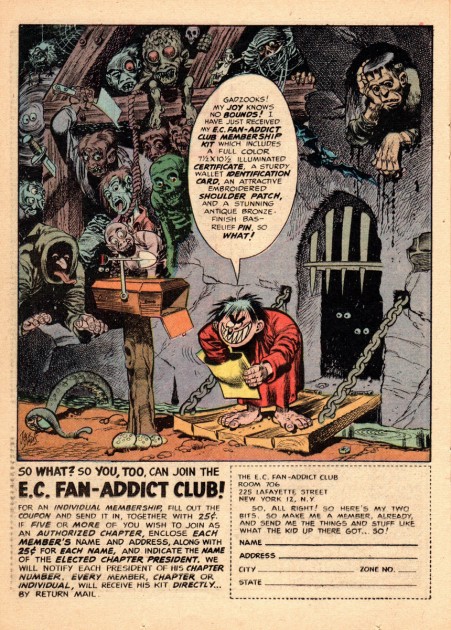 1
1The first in-house ad is by Jack Davis
the second one by Wally Wood.
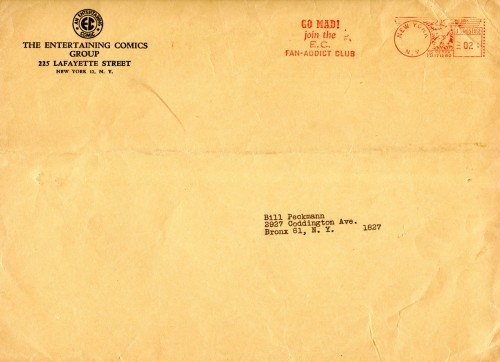 3
3
Unfortunately the only things that remain from the original
EC Fan-Addict package is the envelope everything was sent in,
the certificate and the 5 bulletins that were published.
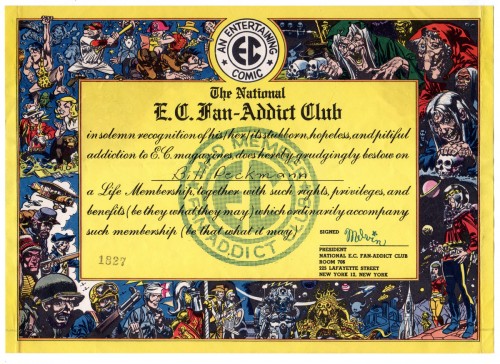 4
4
The certificate by Jack Davis.
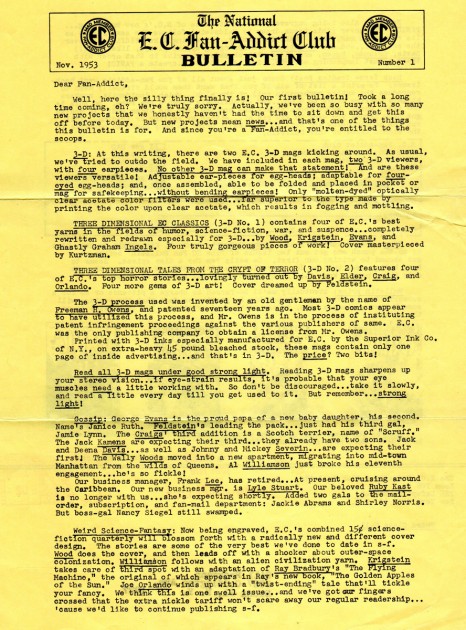 5
5
The first two page bulletin.
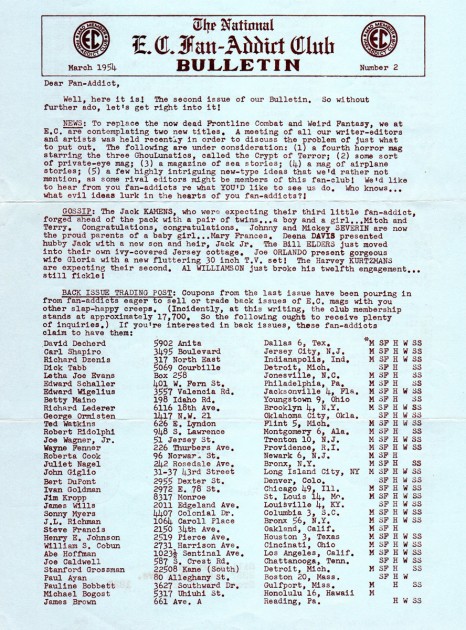 7
7
Note that in the “Gossip” column Jack Davis’ wife Deena
gave birth to their son Jack Jr., who then later made his
way in the world as an architect. It was Jack Jr. who
designed the house and porch that Jack Sr. is sitting in,
in the photo in the last JD posting. (It’s the porch that the
Gee thought was pretty cool.)
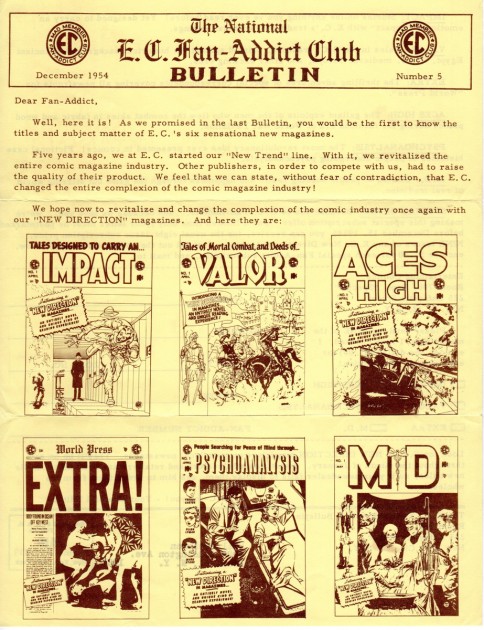 13
13
All good things must come to an end,
the fifth and final issue of the Bulletin.
We started the blog with inhouse ads, so we might as well end it with a few more.
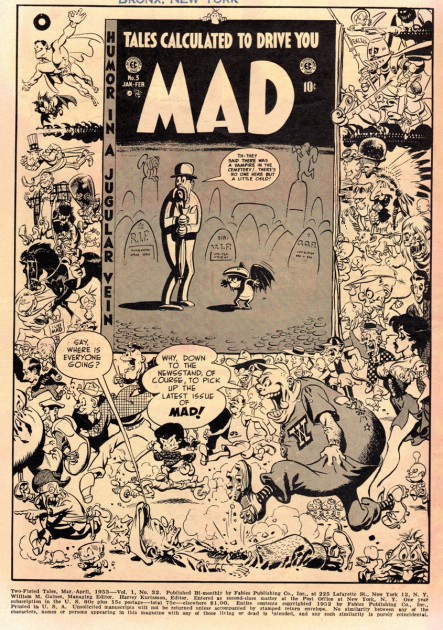 15
15This is Wally Wood’s promo for MAD no. 3.
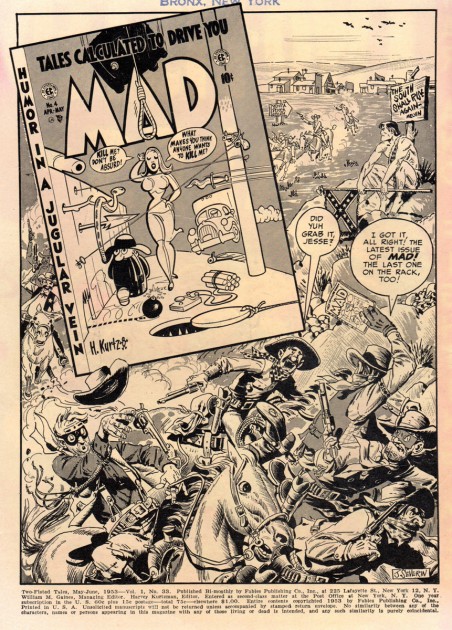 16
16
Ad for MAD No. 4 by John Severin.
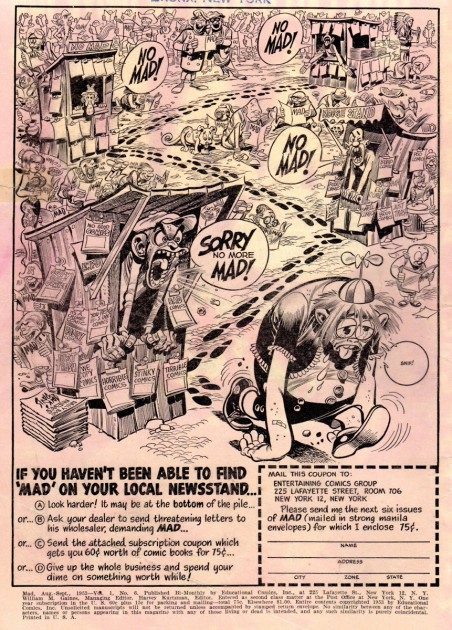 18
18
By the one and only Jack Davis.
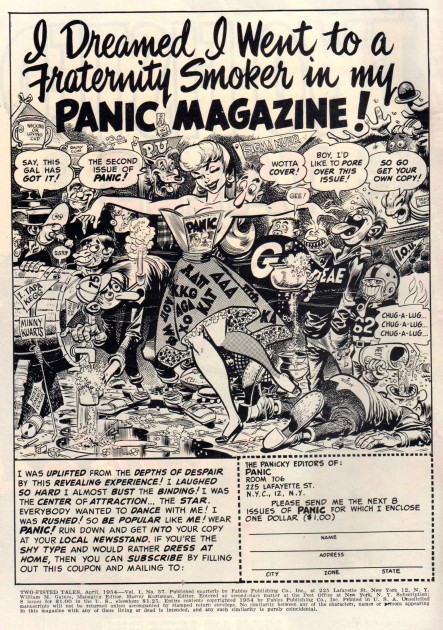 19
19
Jack Davis flogging EC’s own MAD comic book imitation PANIC.
(That’s All Folks!)
Many thanks to Bill Peckmann for sharing this great and unusual memorabilia.
Bill Peckmann &Comic Art &Disney 09 Dec 2011 06:36 am
Ben & Me – Comic Book – 2

- Here we have the conclusion to the comic book version of Ben & Me. Part 1 here.
Al Hubbard was the artist behnid the work; beautiful brush inking and great compositions. The material came from Bill Peckmann‘s collection for which I’m enormously grateful. Any notes from here on come from Bill:
- Whenever Al Hubbard adapted Disney feature film characters to comic books he always gave them the authenticity they deserved. His style is deceptively loose and simple but he was always on model and his drawings are full of life.
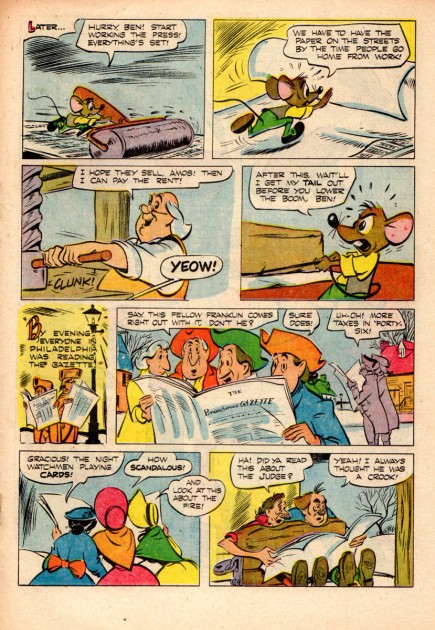 17
17
Here’s a neat way to show off Hubard’s formidable lay out ability, it’s by showing the pages in the gray scale mode so the coloring doesn’t get in the way. (Luckily the colors transform well into gray values. Let your imagination do the coloring and it also takes on the somewhat wonderful look of a production storyboard.)
His page and panel layouts are terrific. They are well designed, move the story and hold your interest. All wrapped up solid acting poses.
(Here are 3 gray scale pages.)
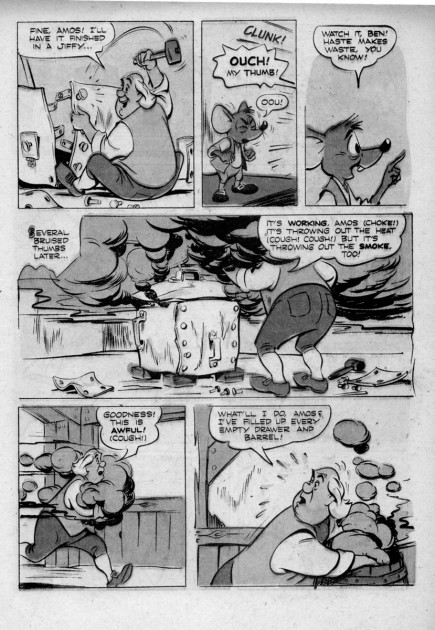 11
11
